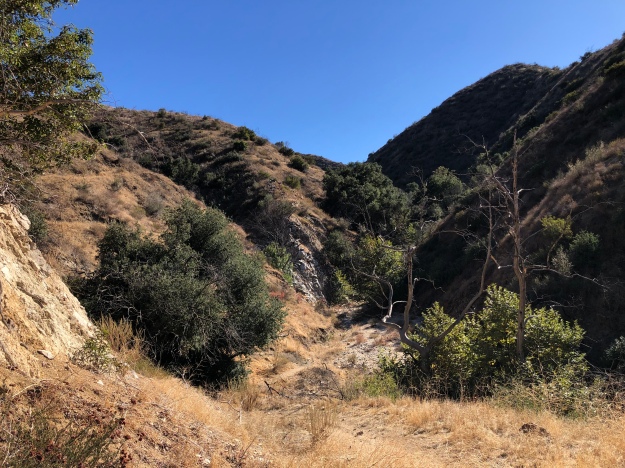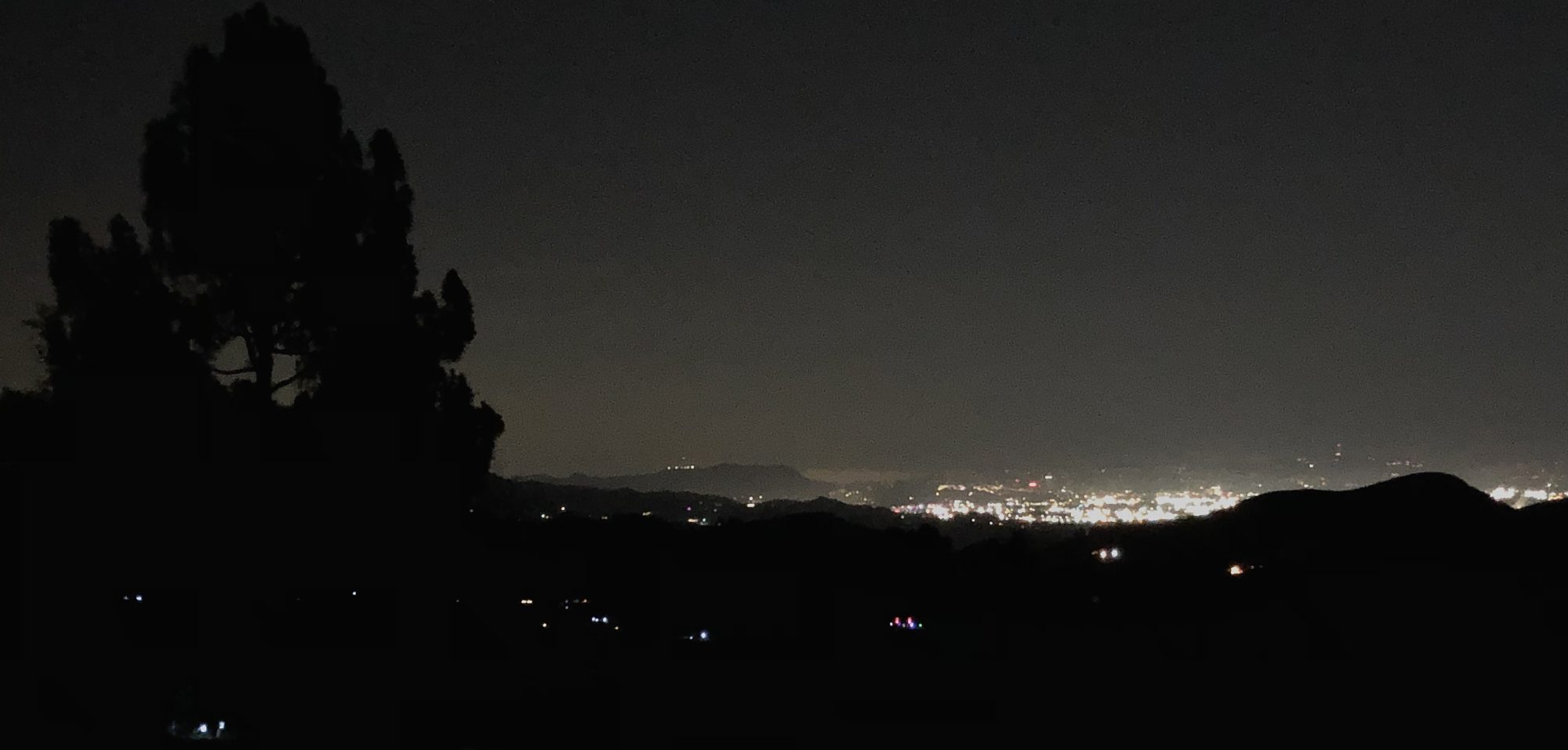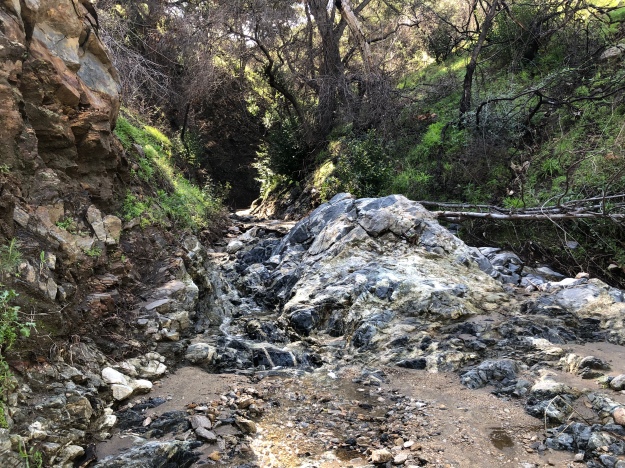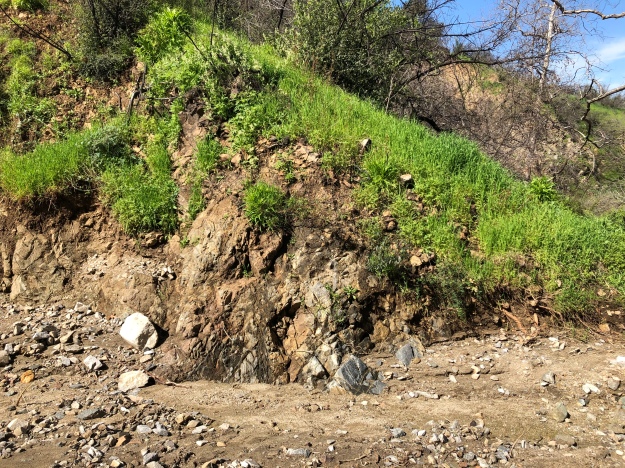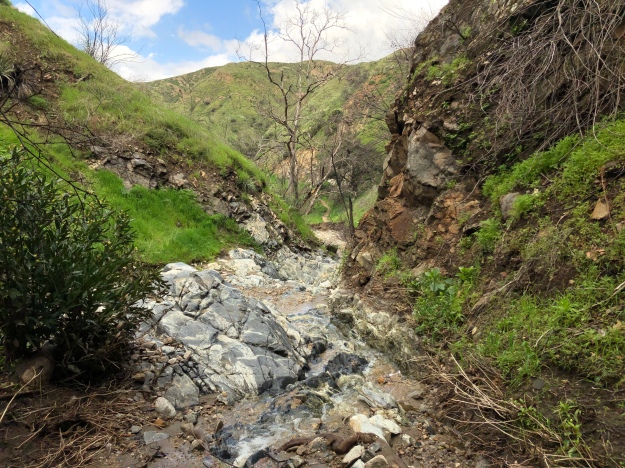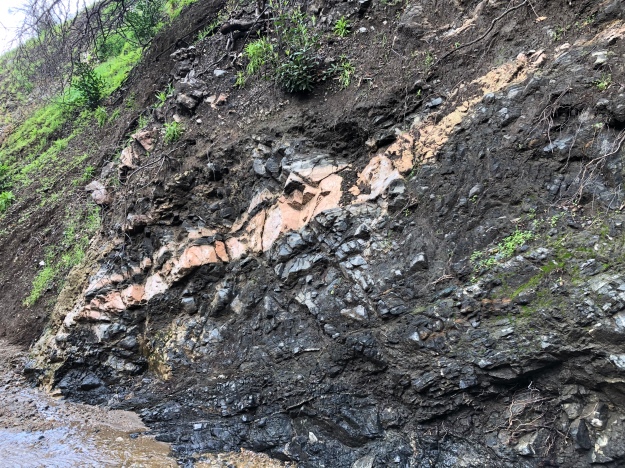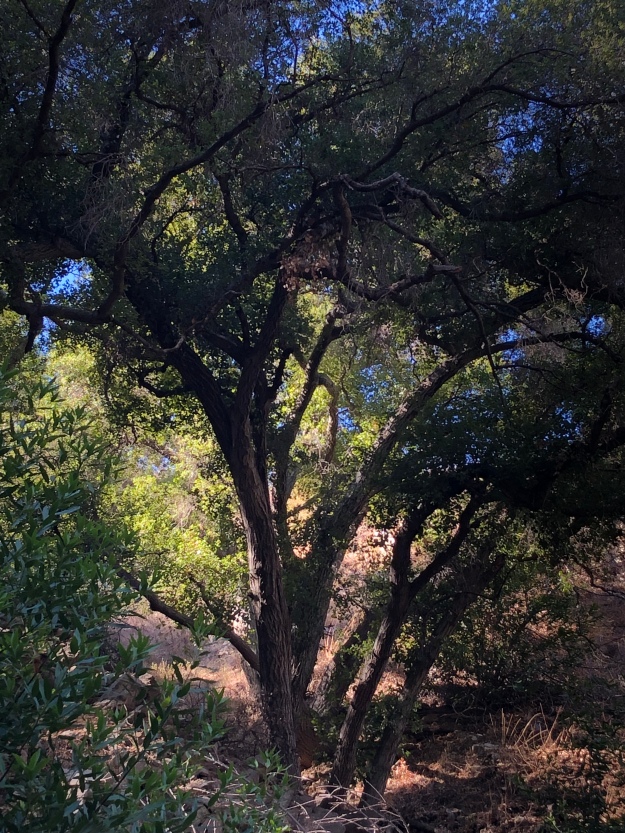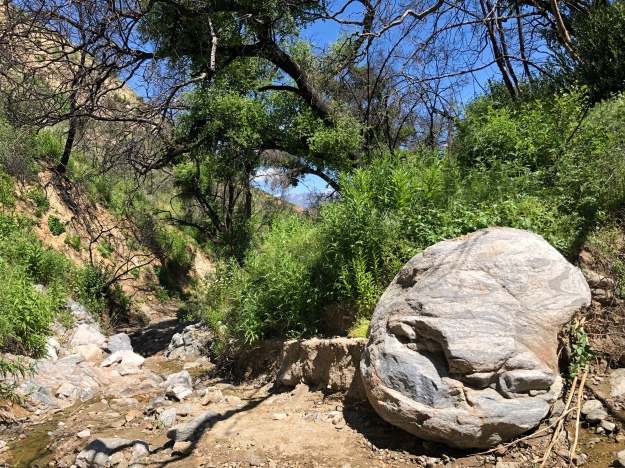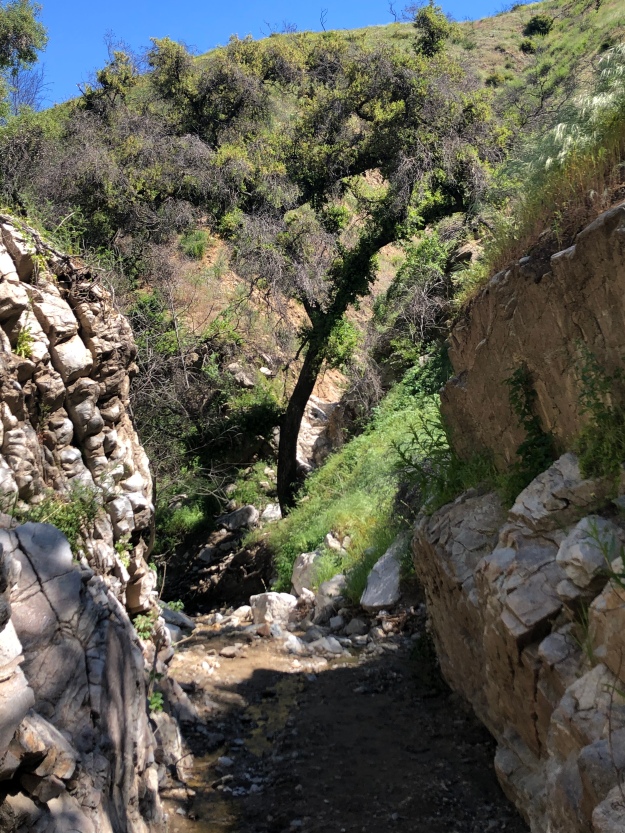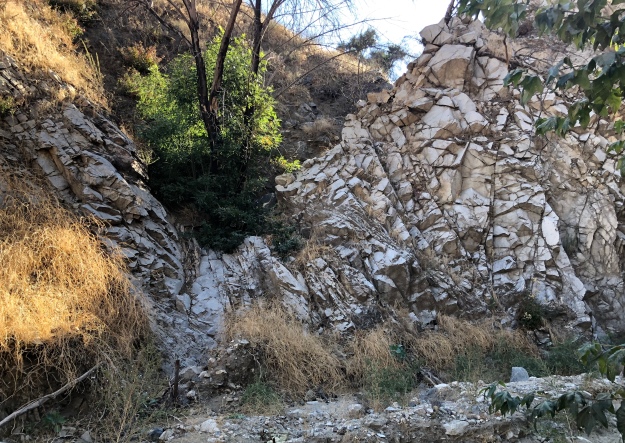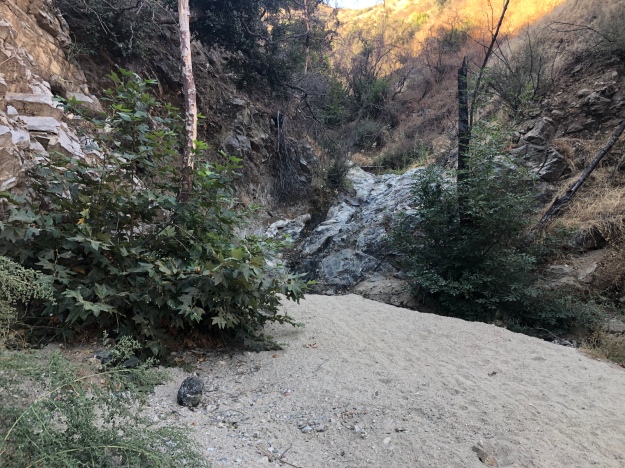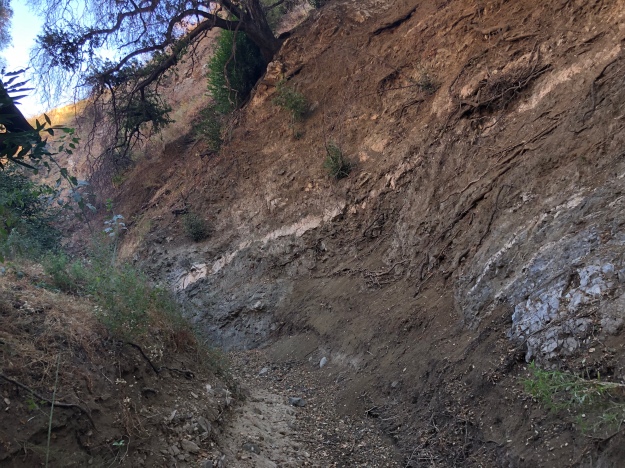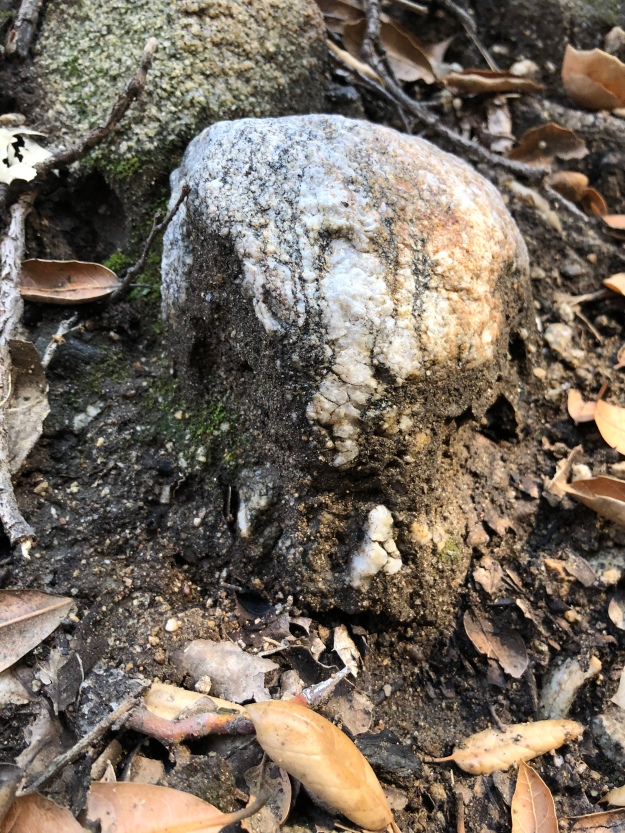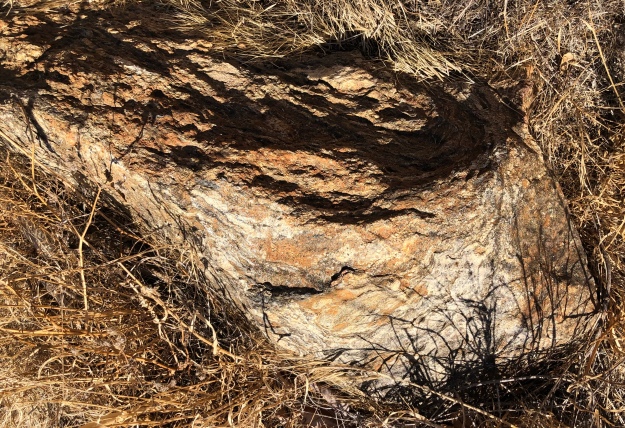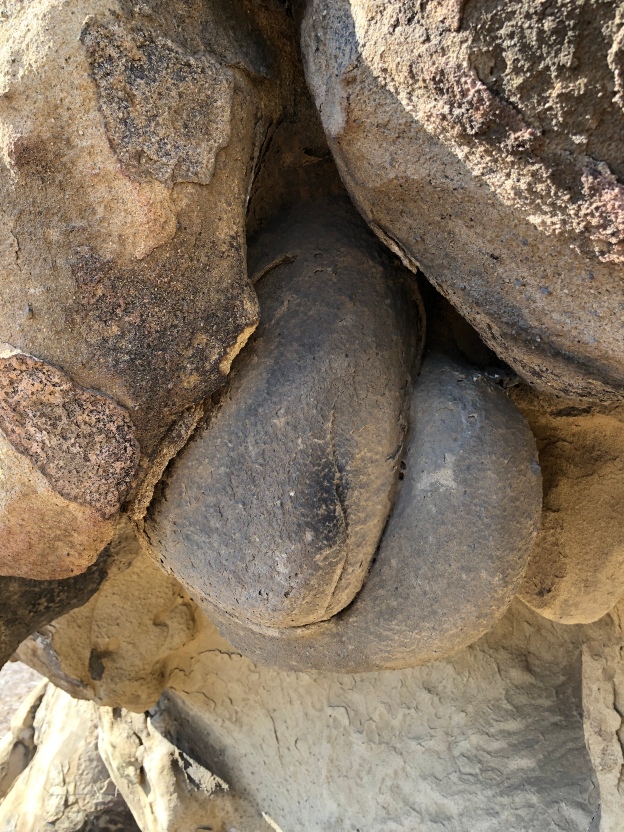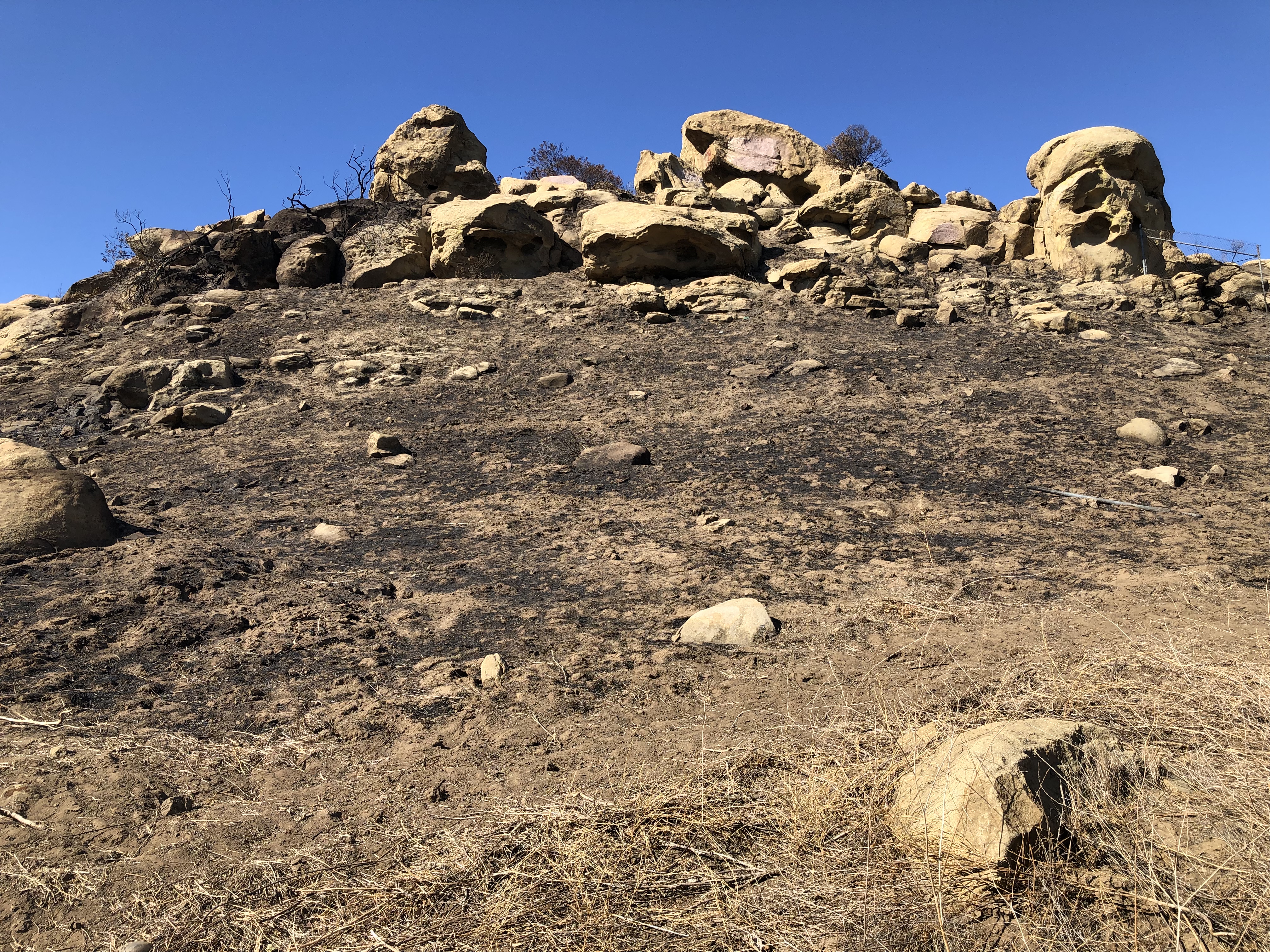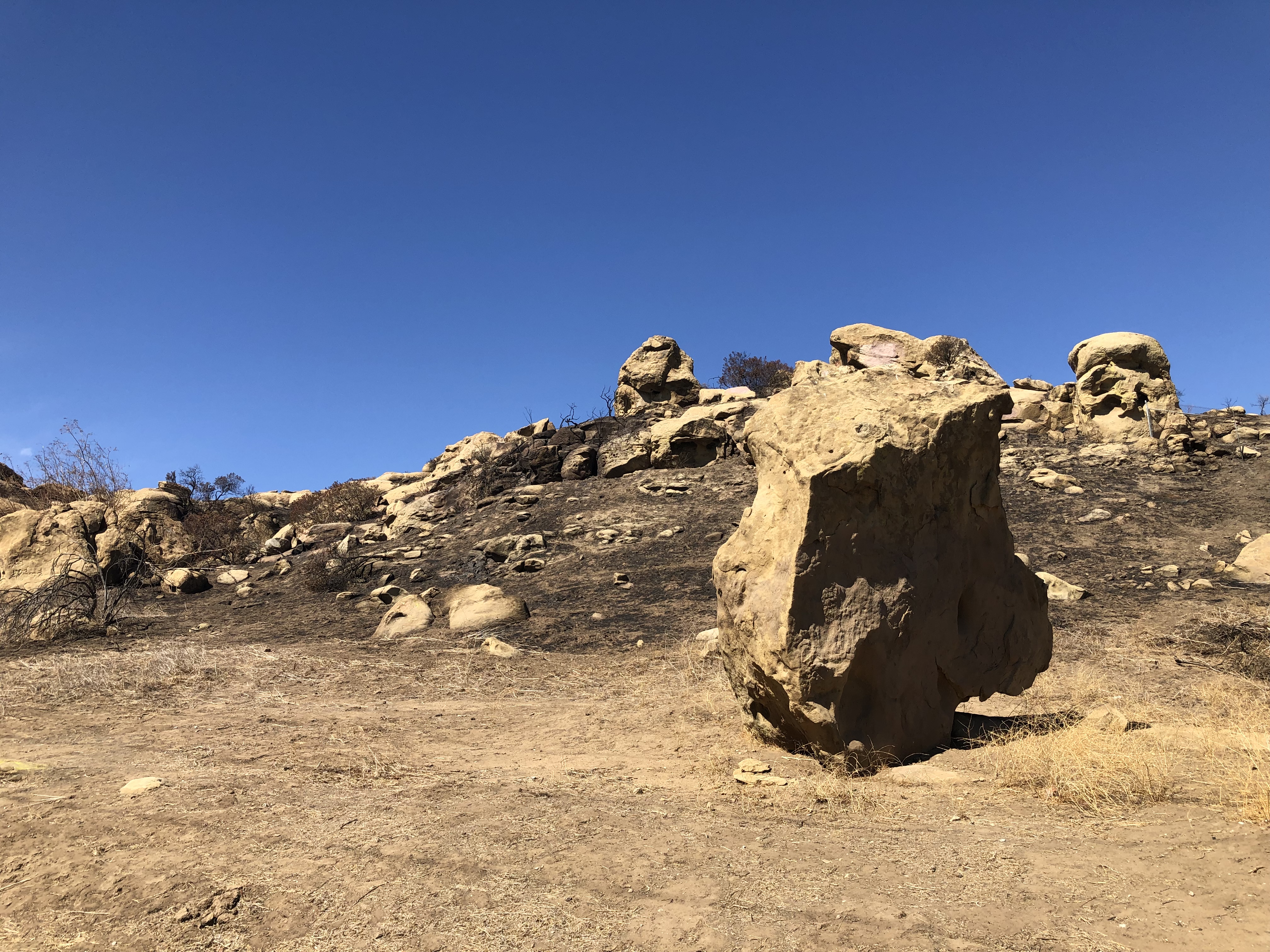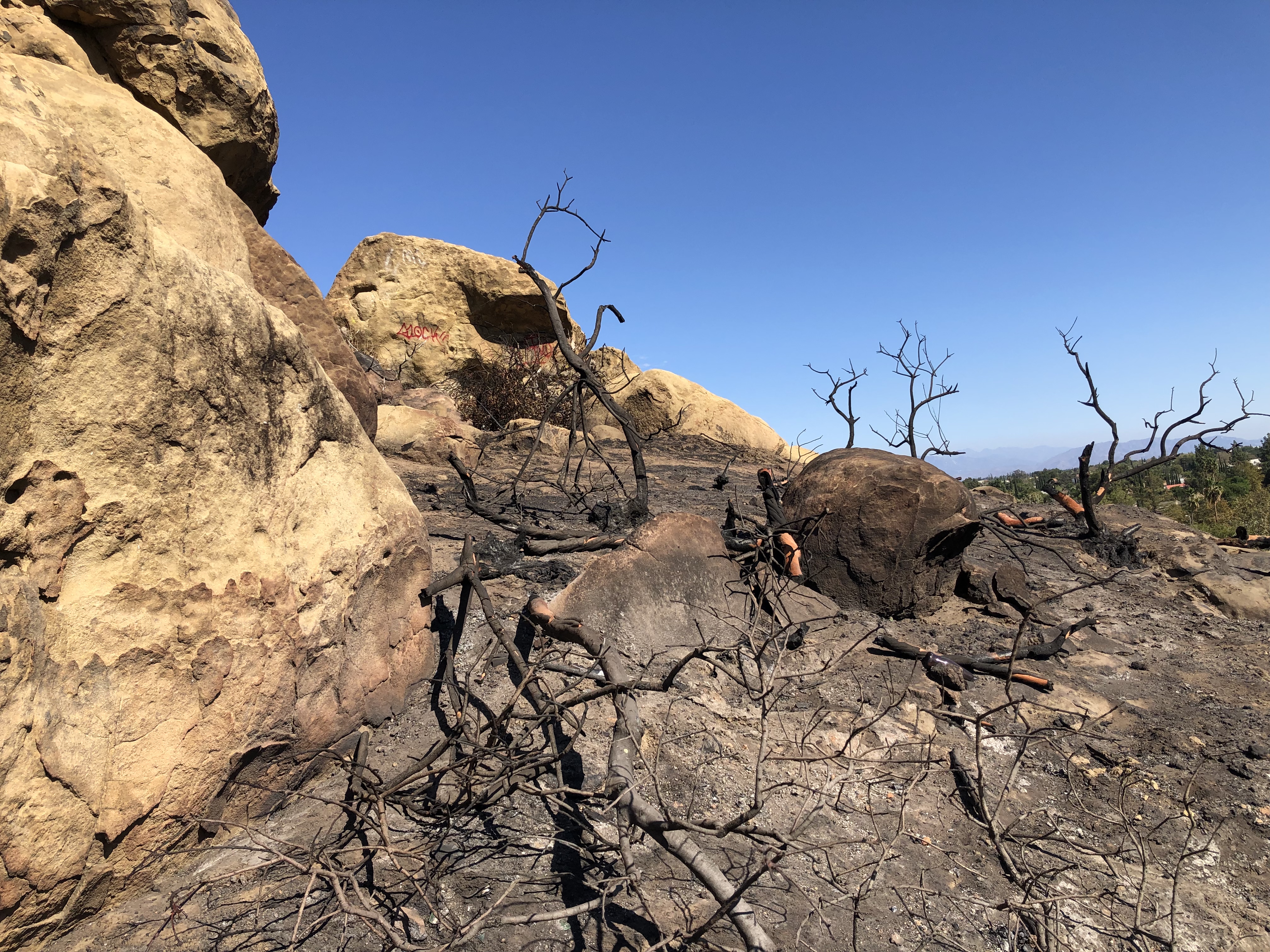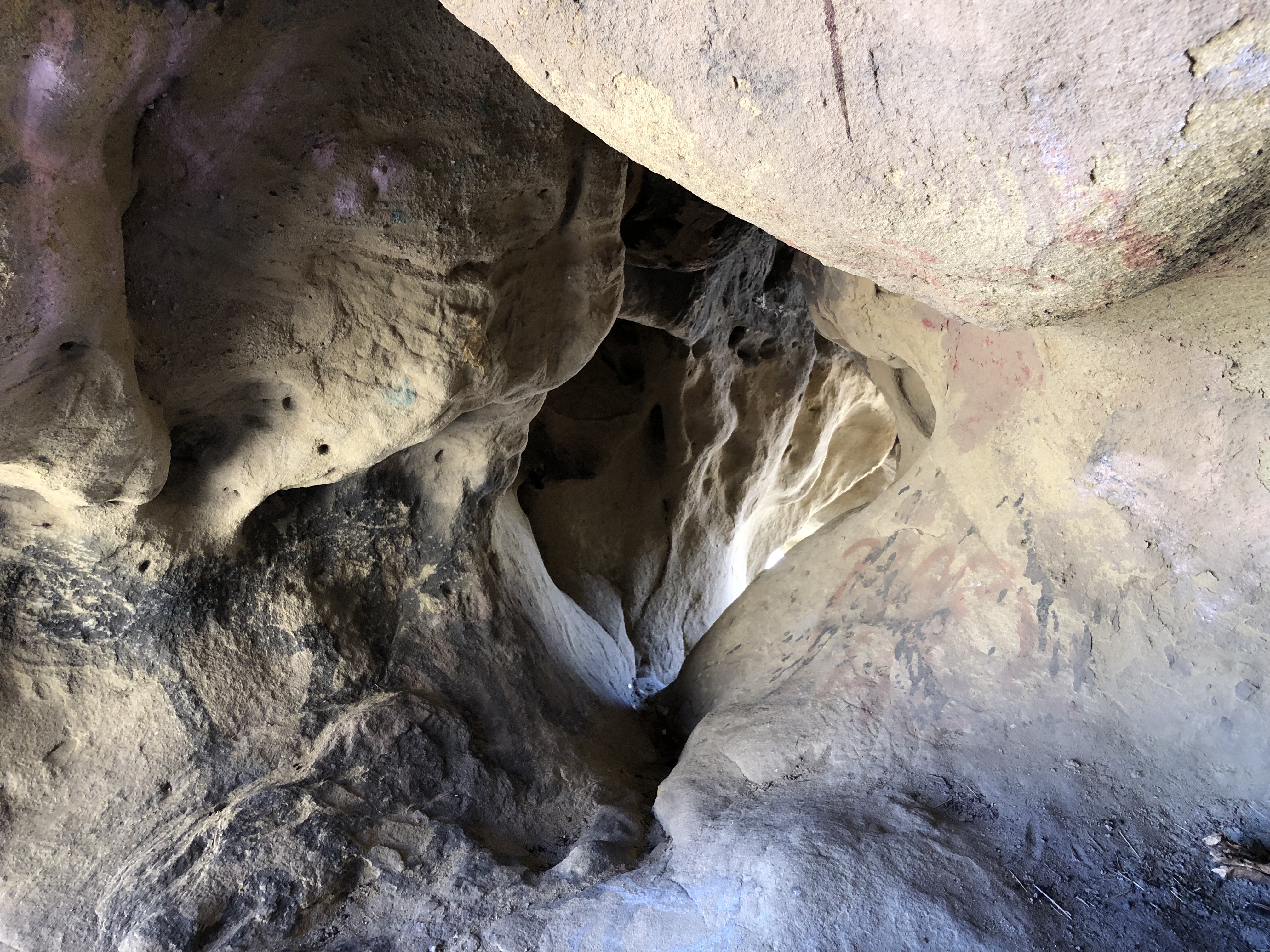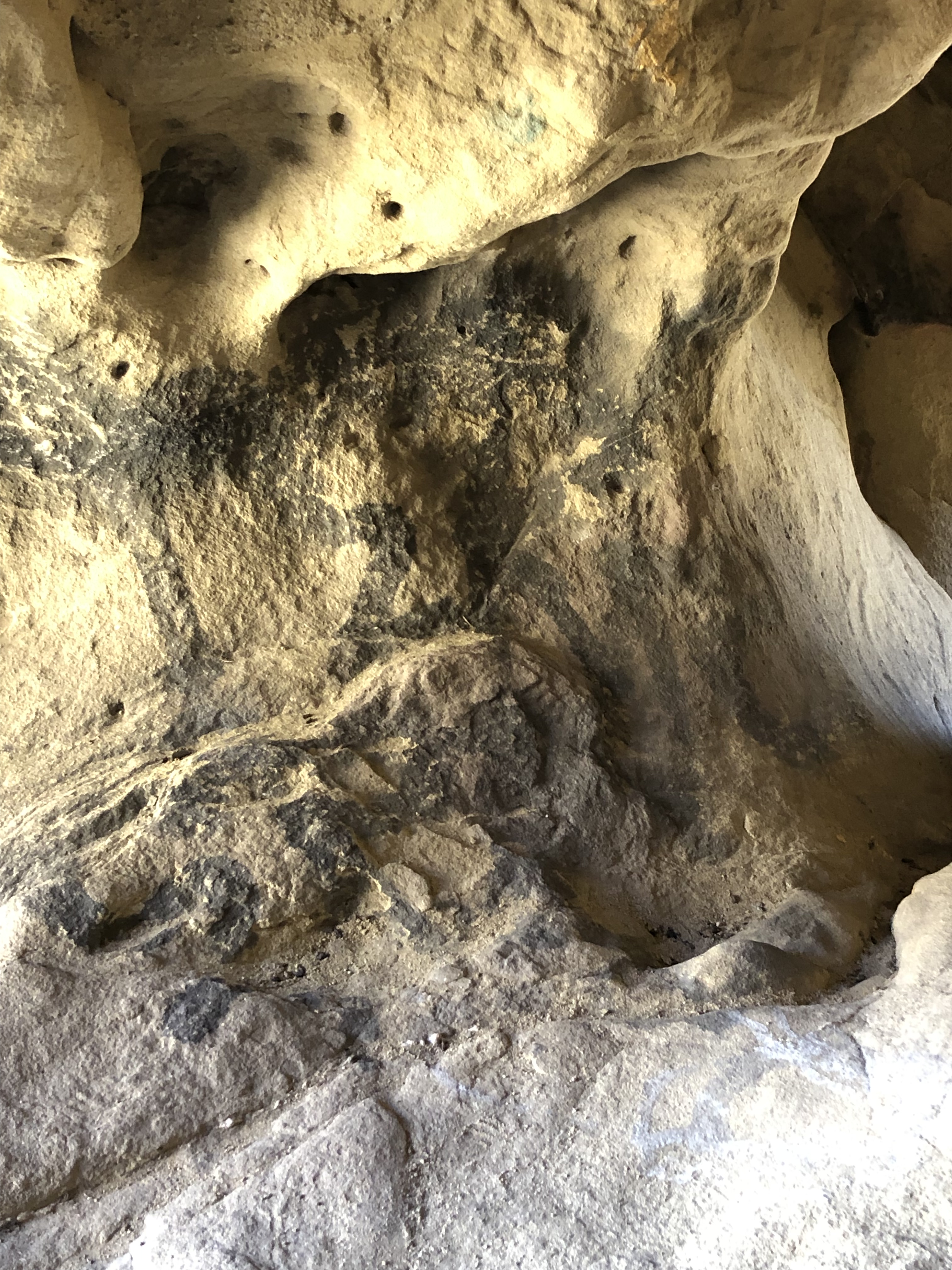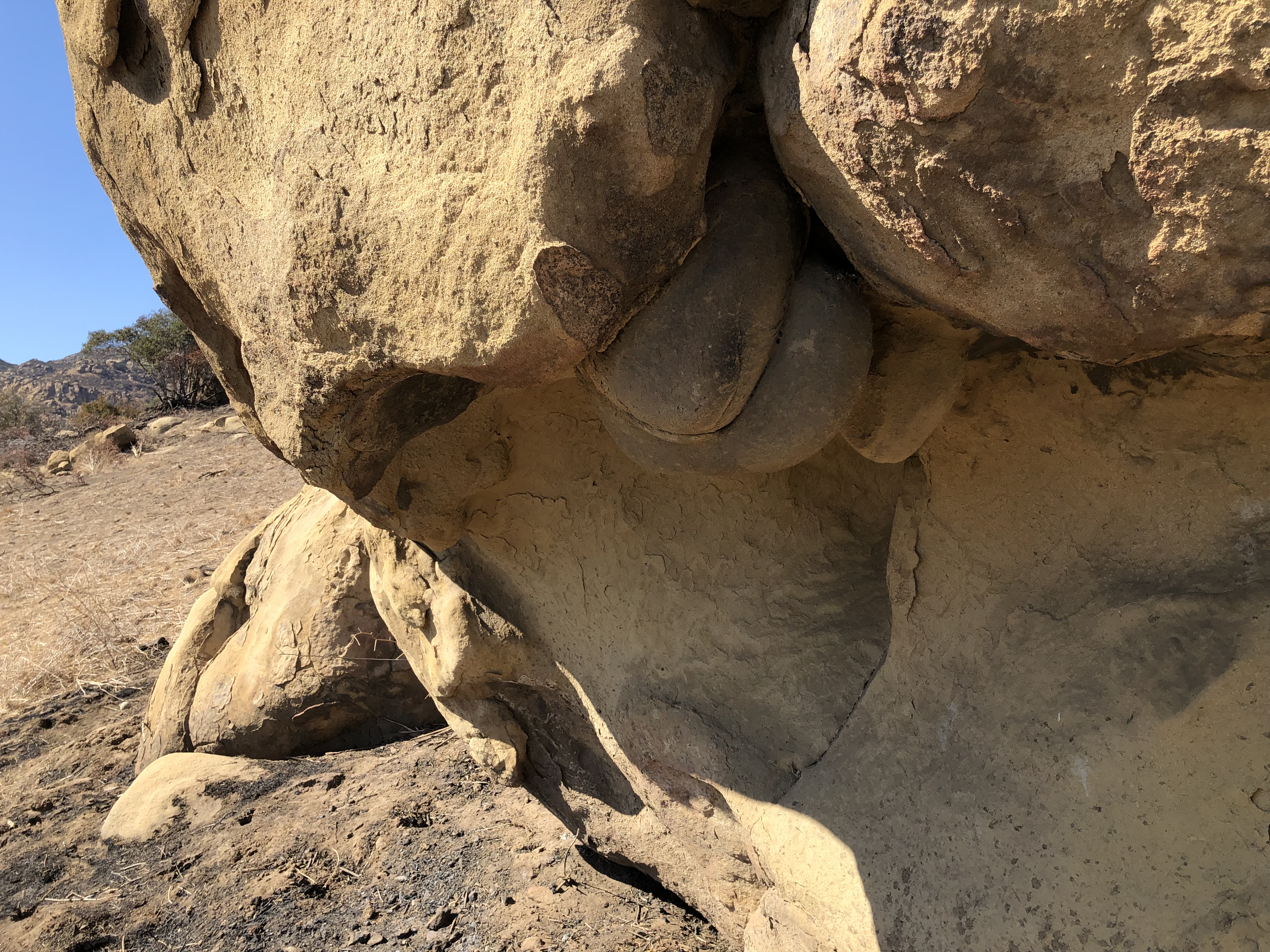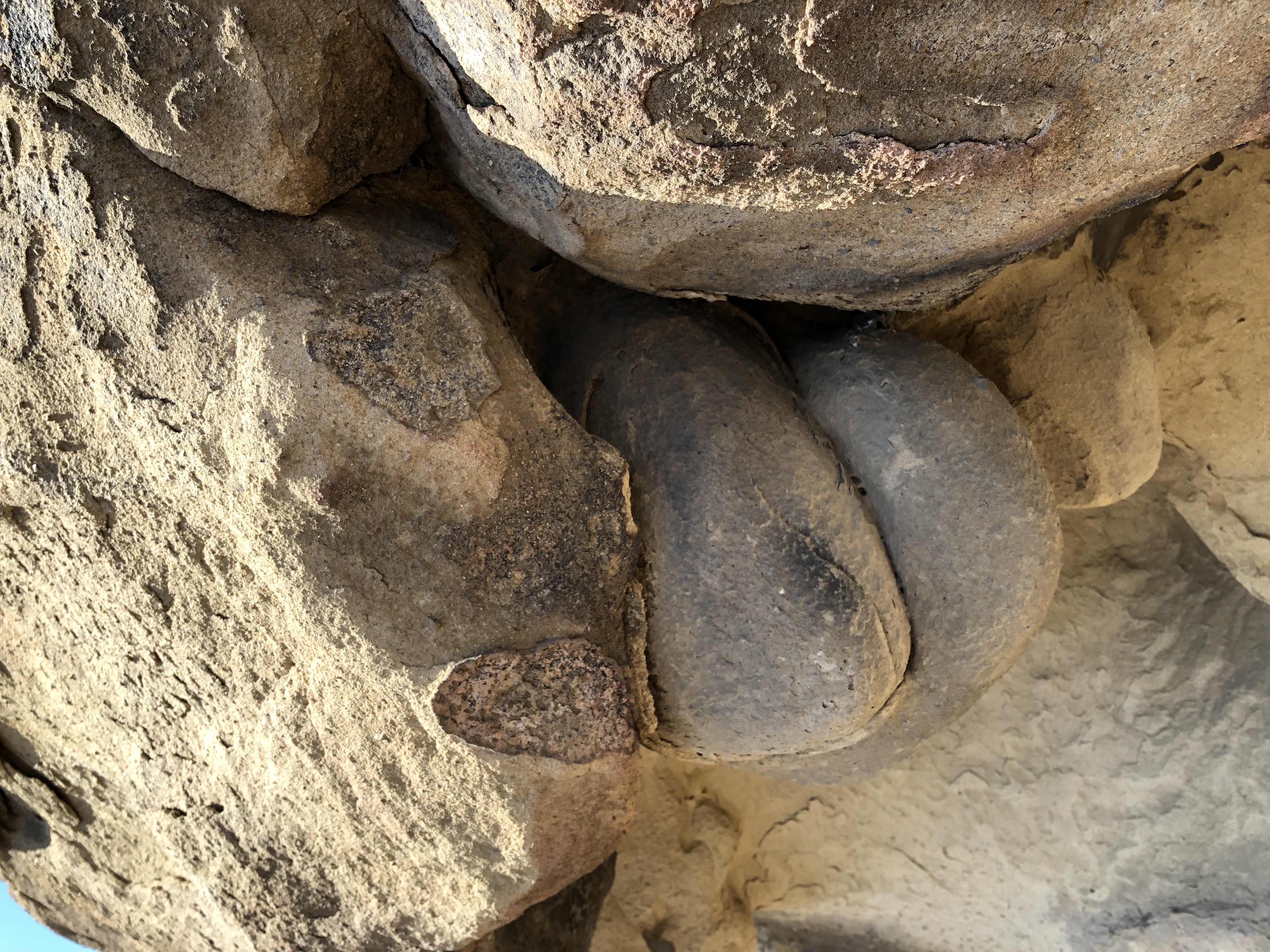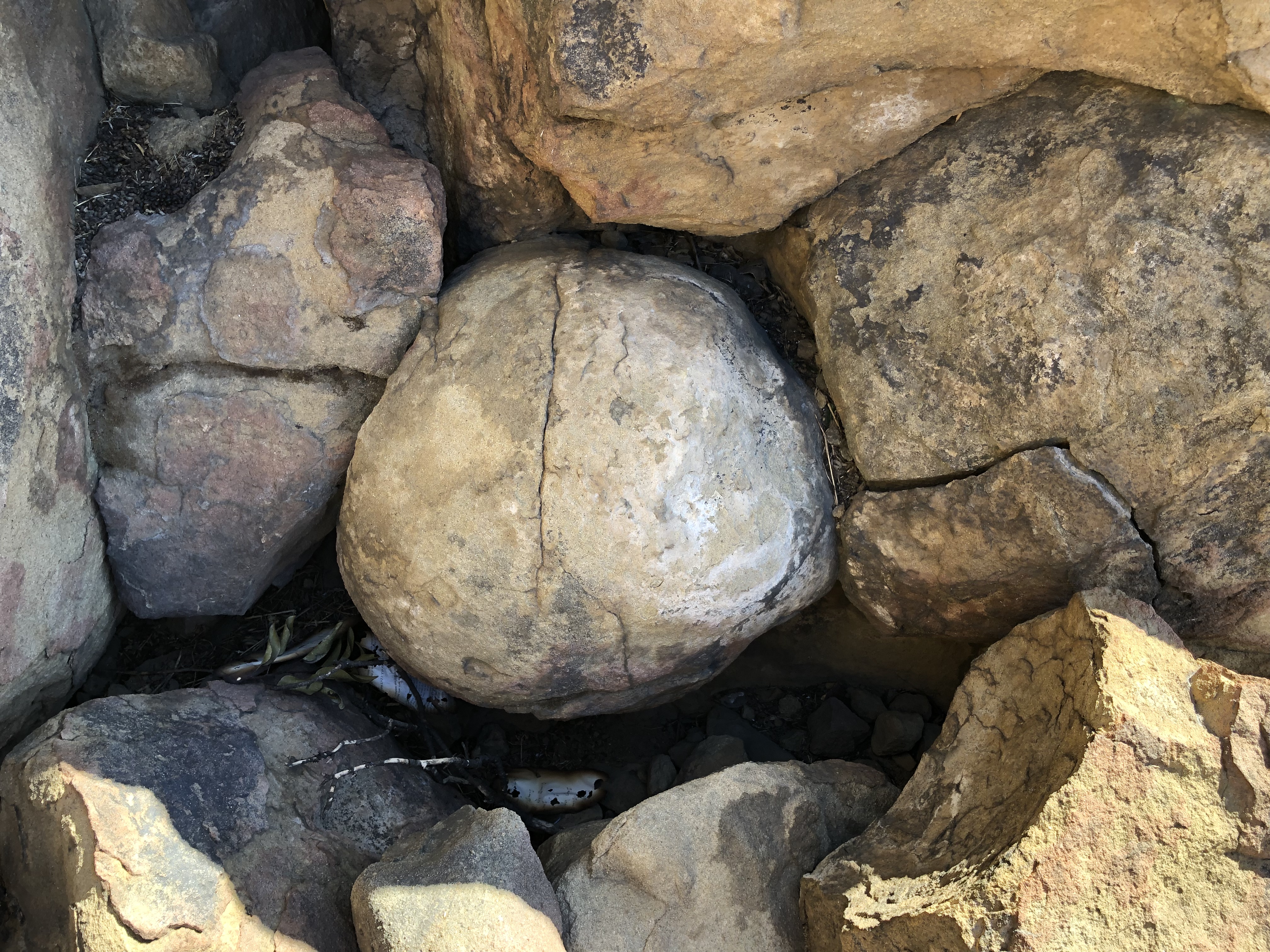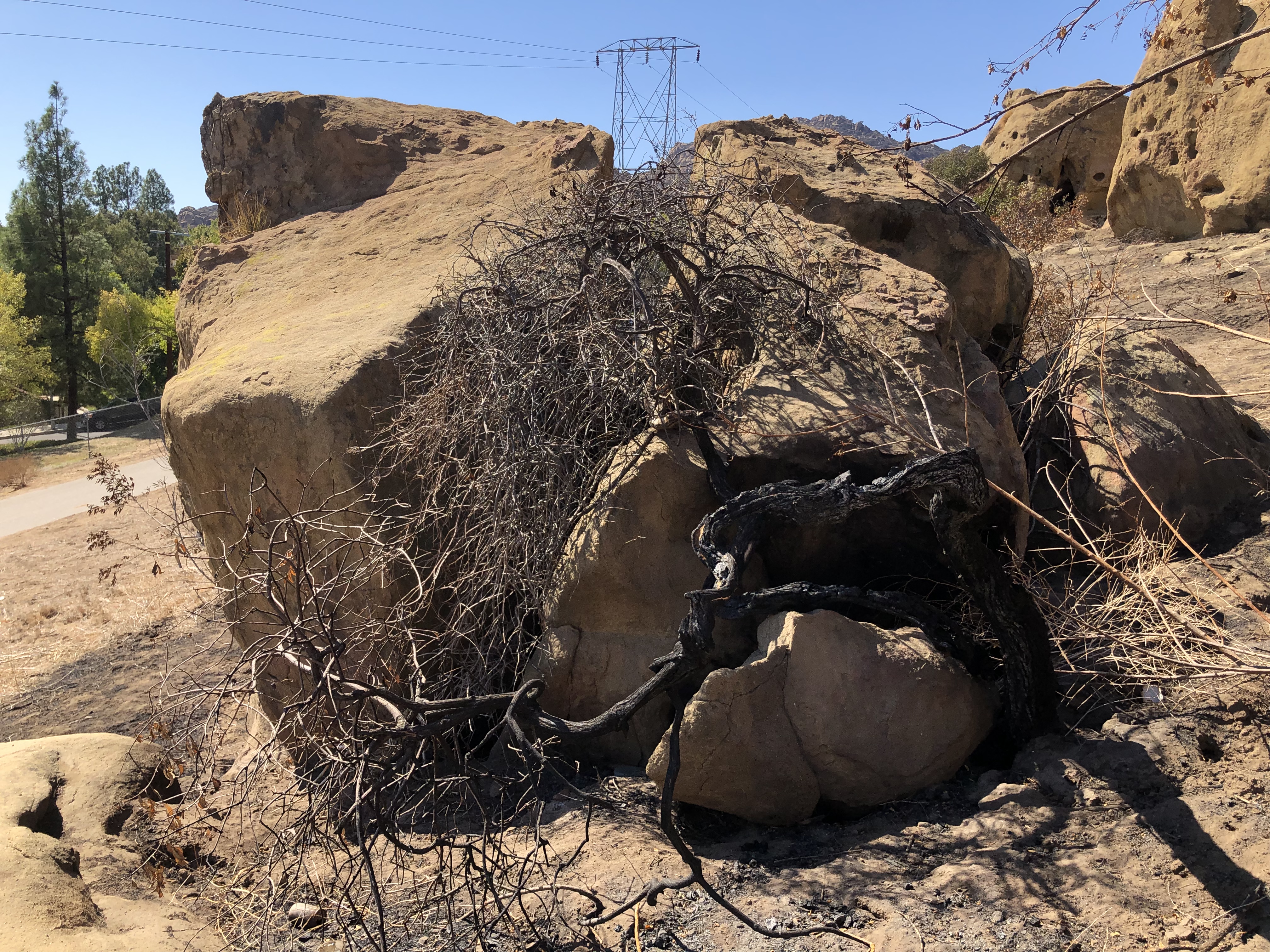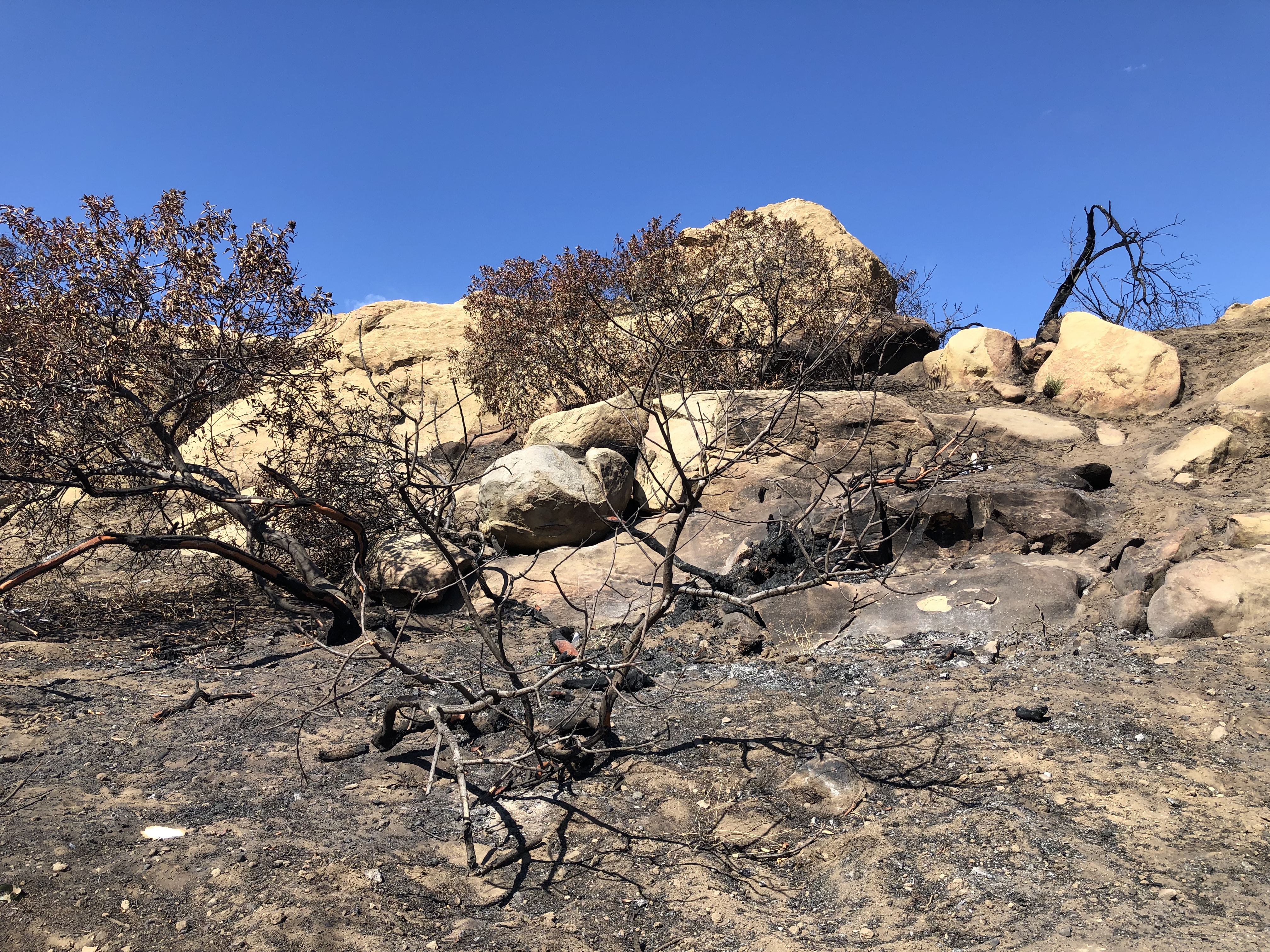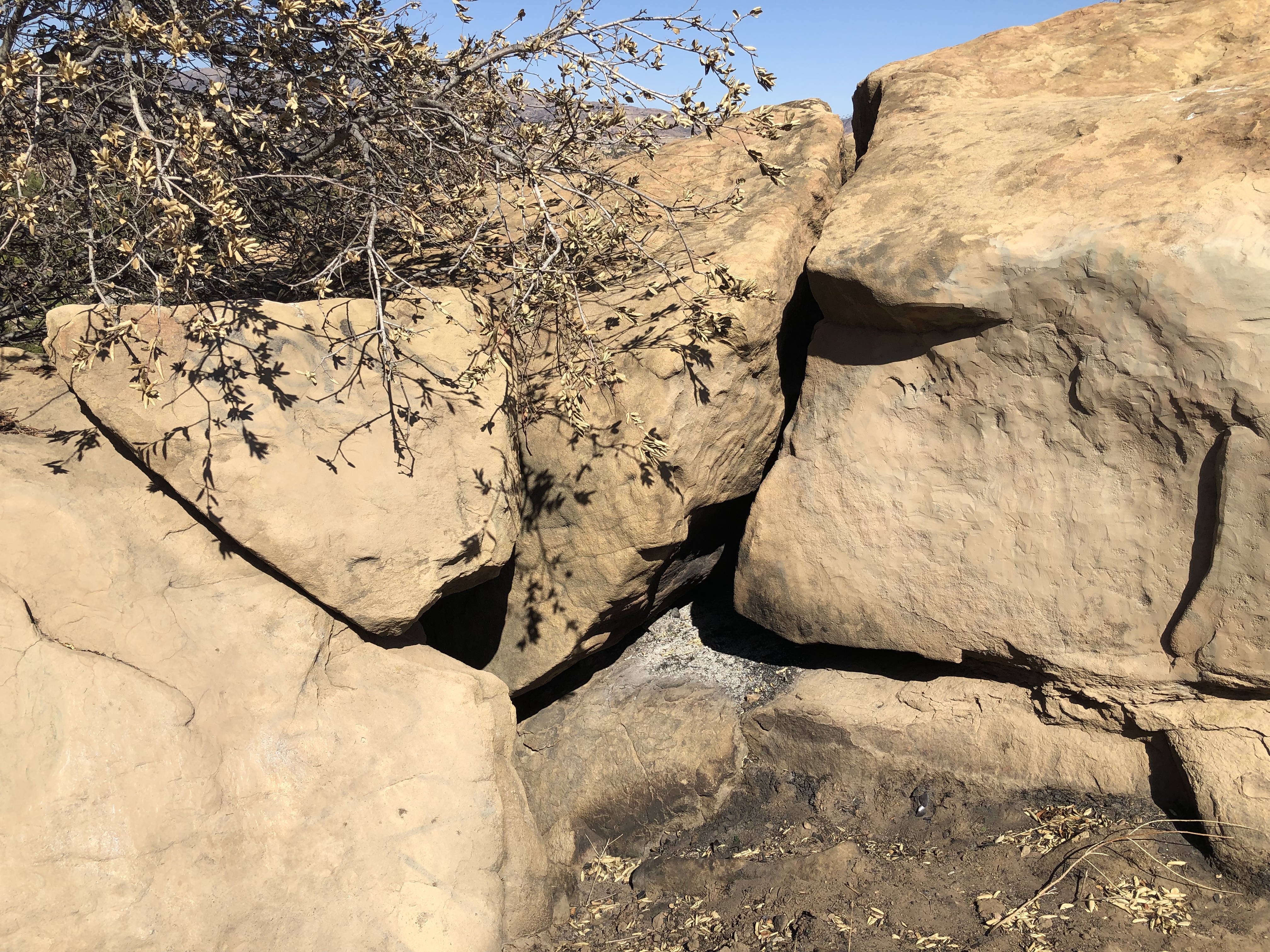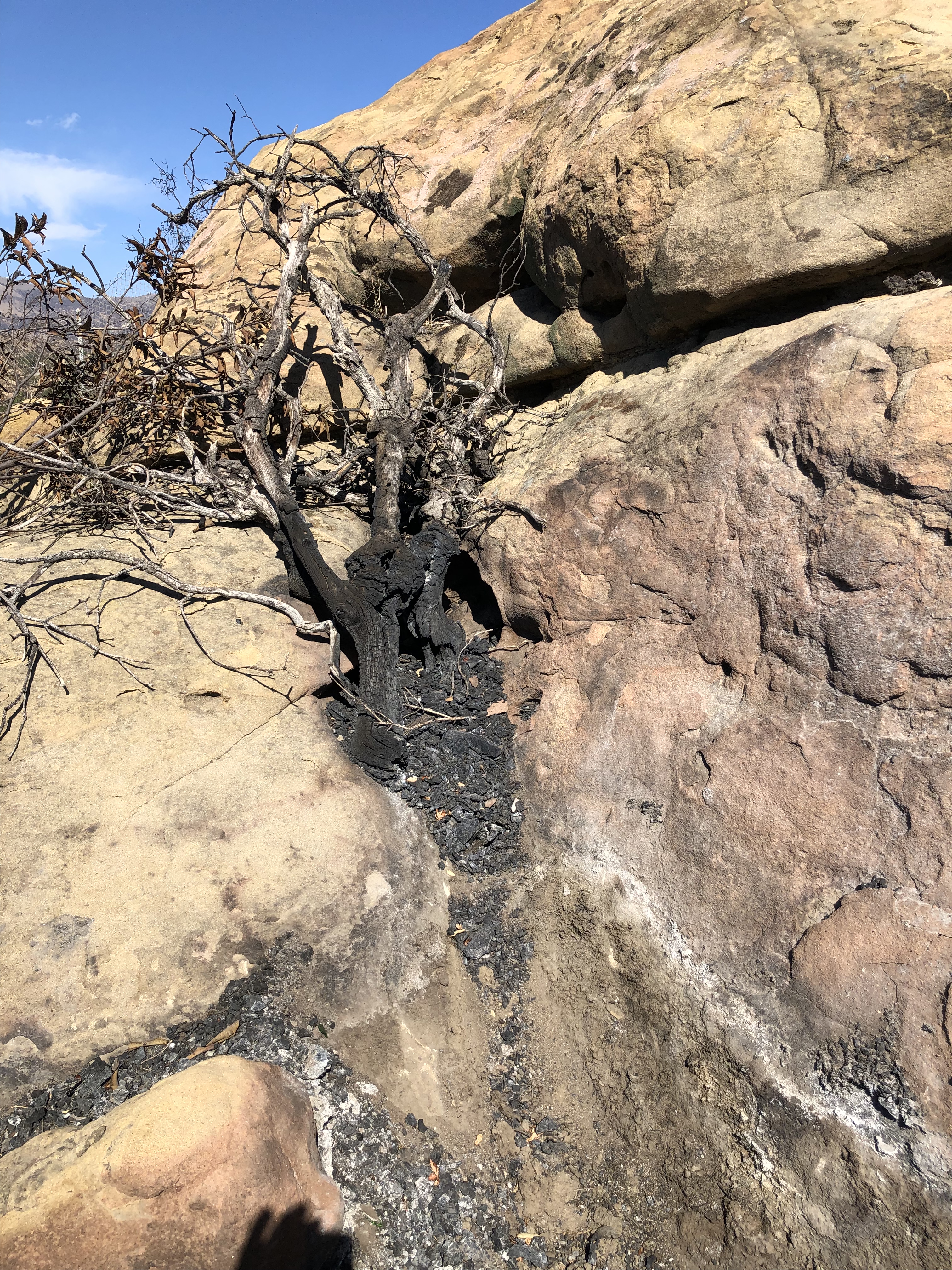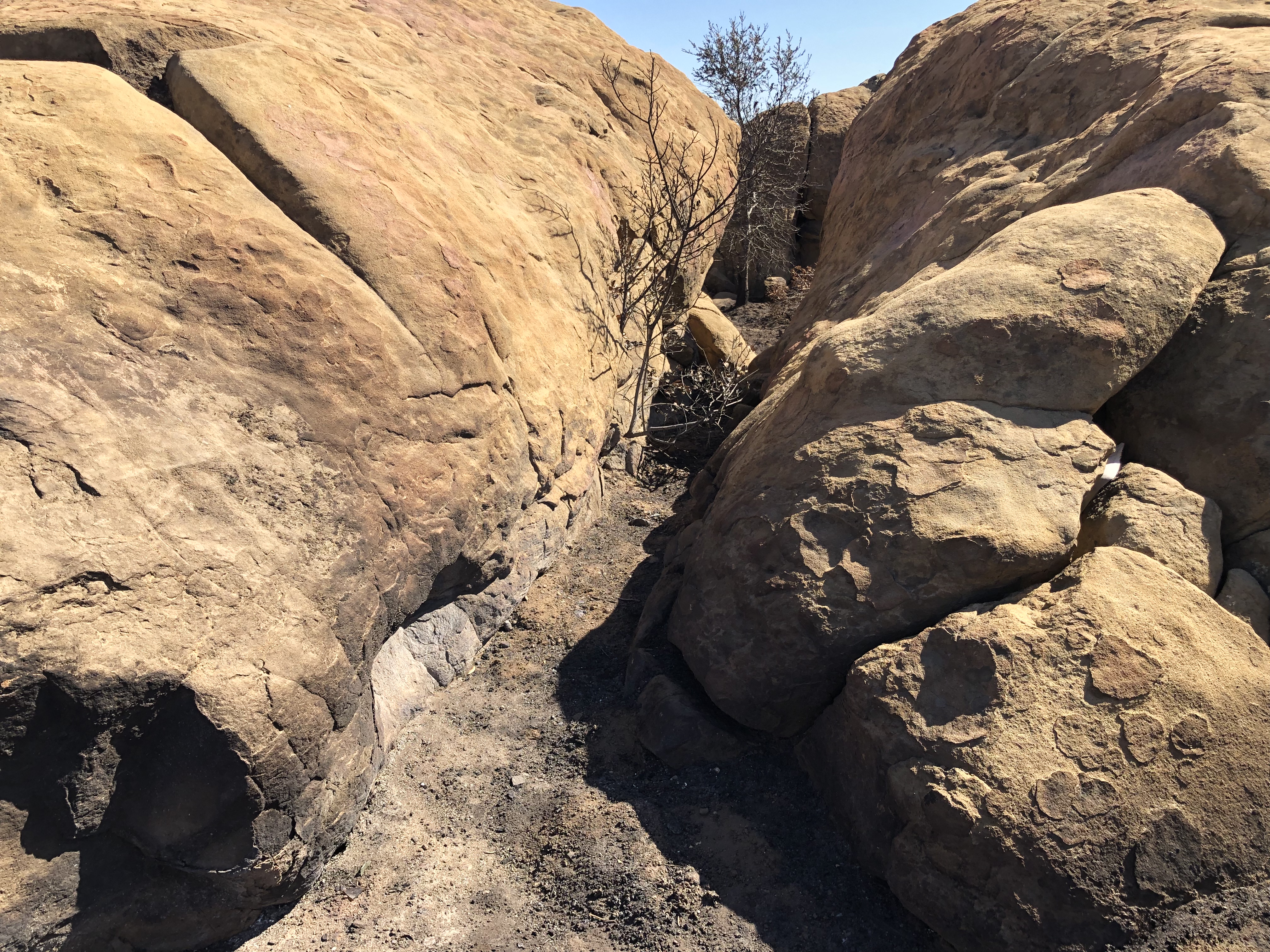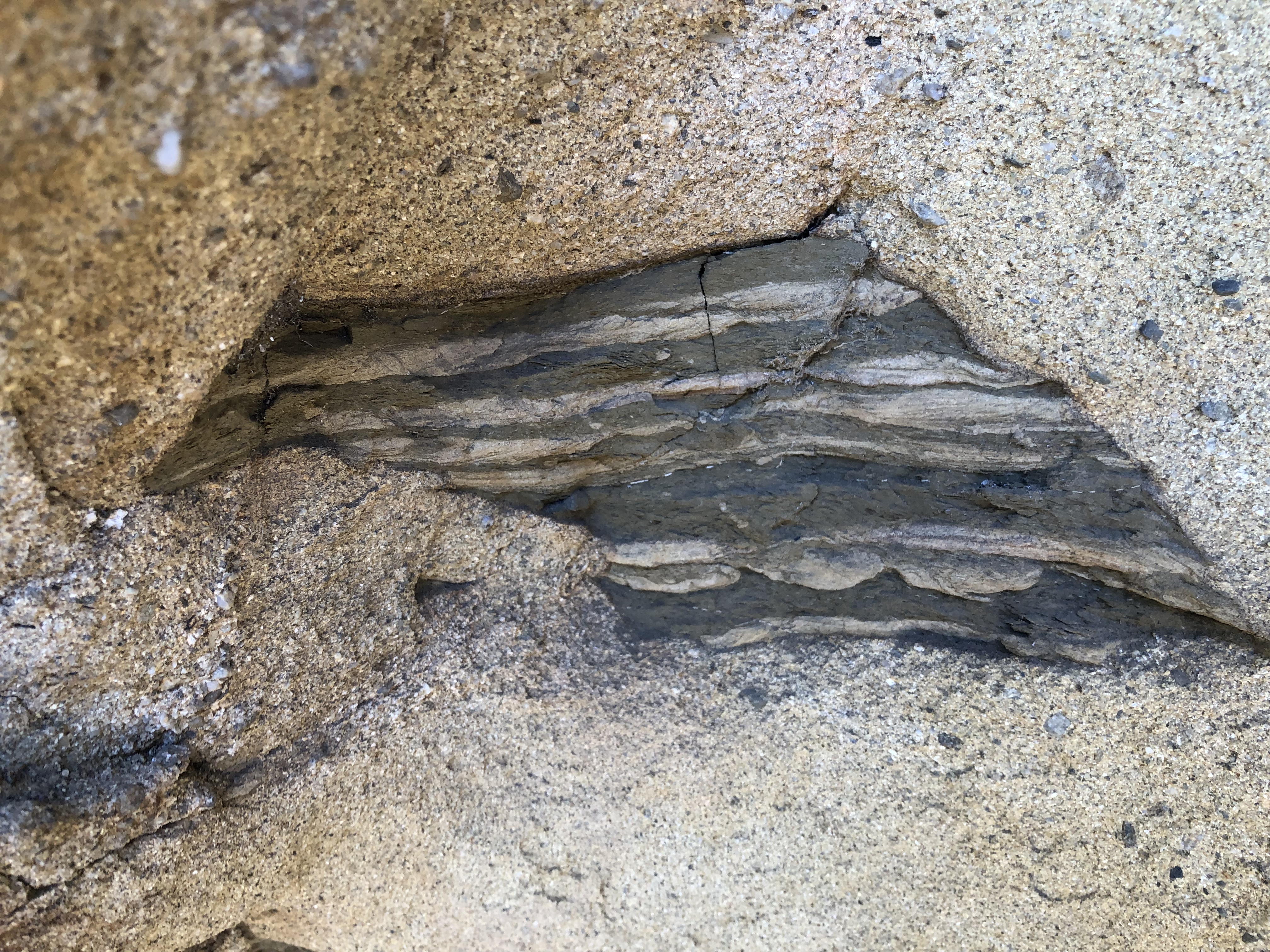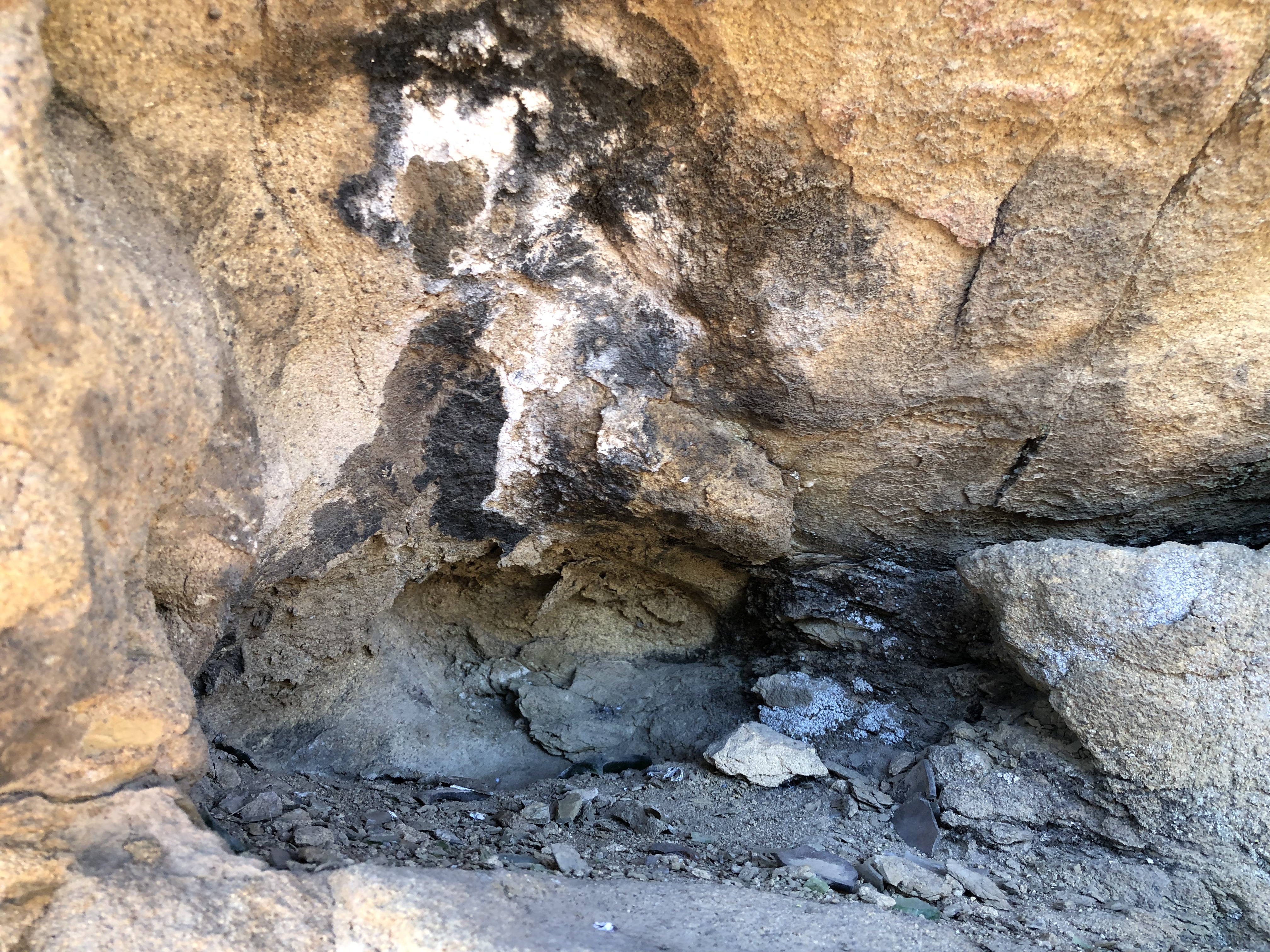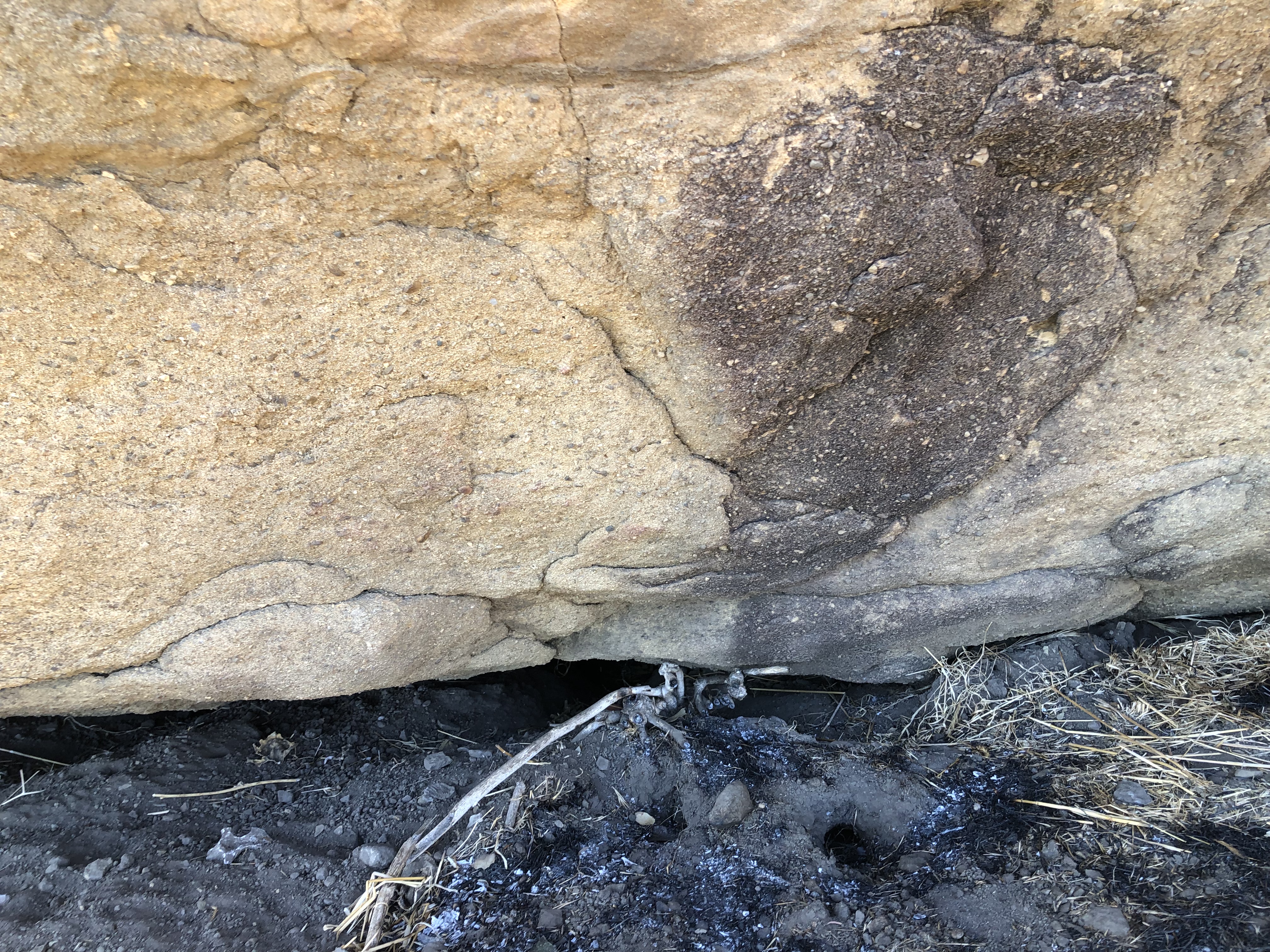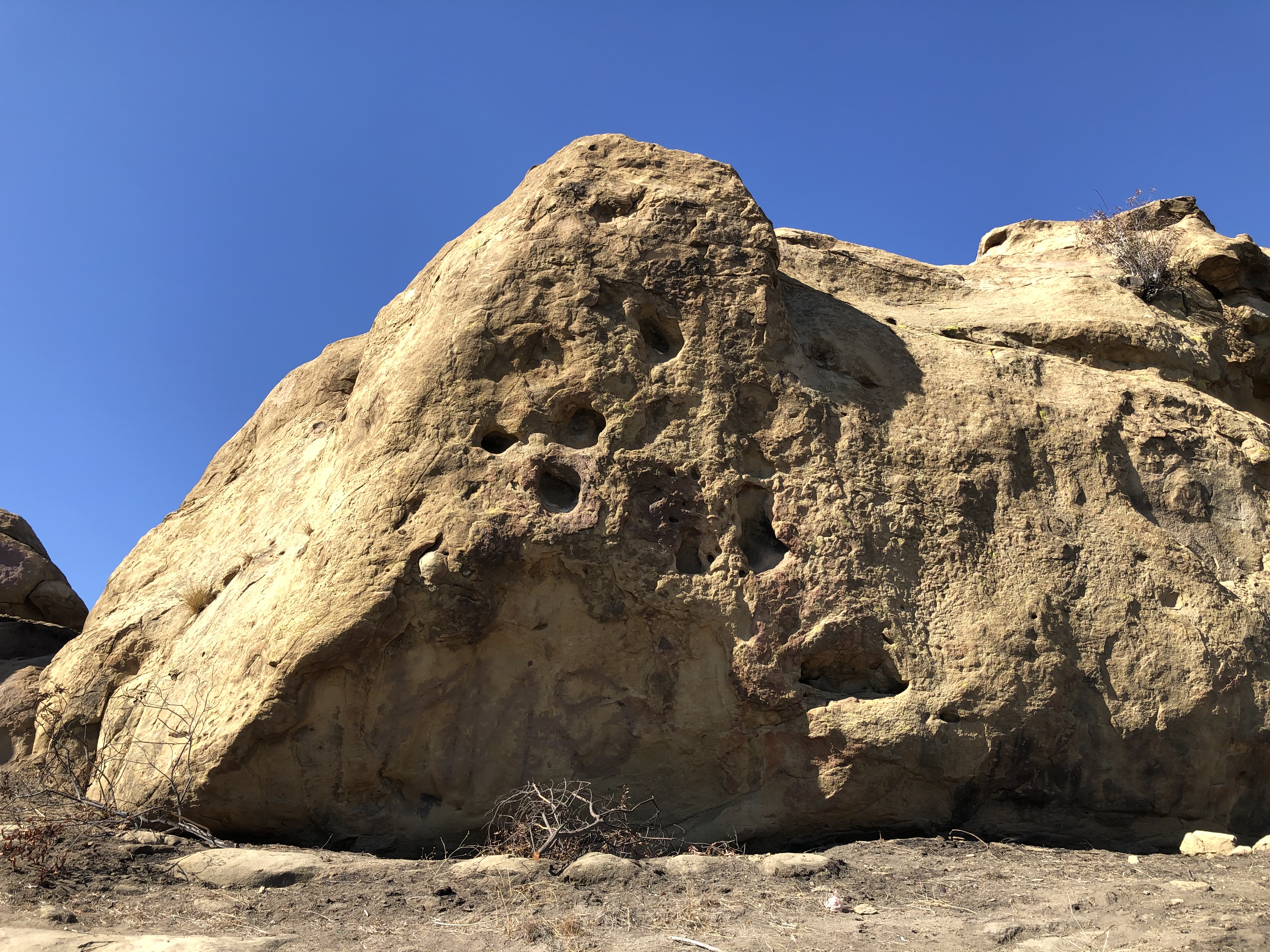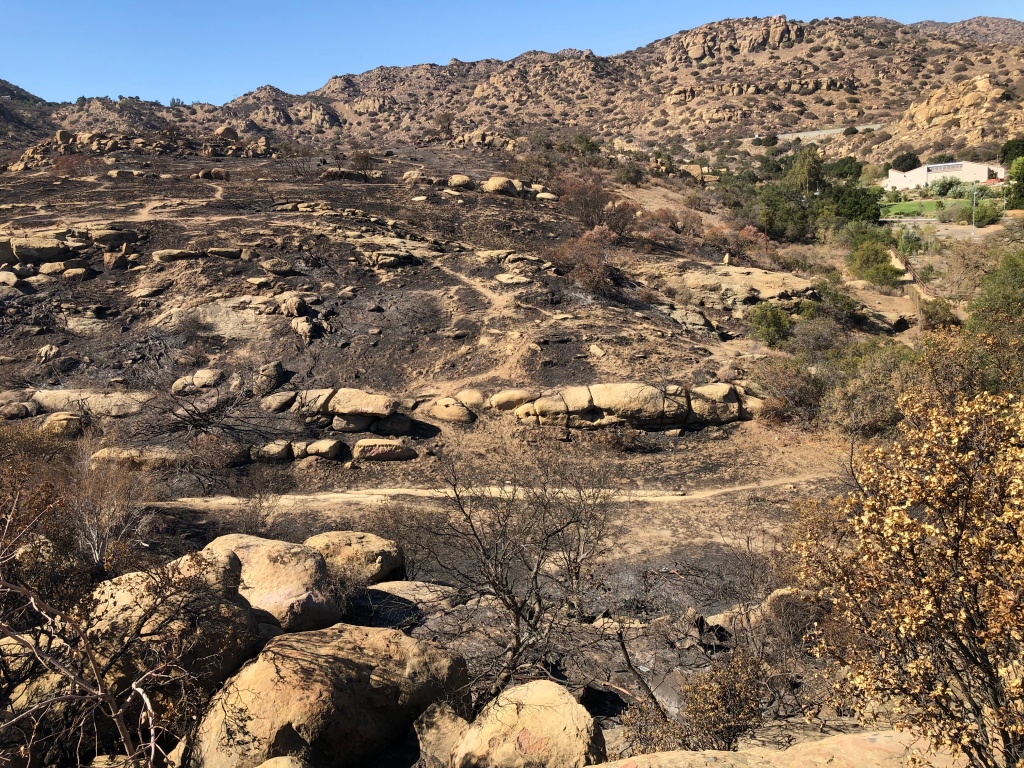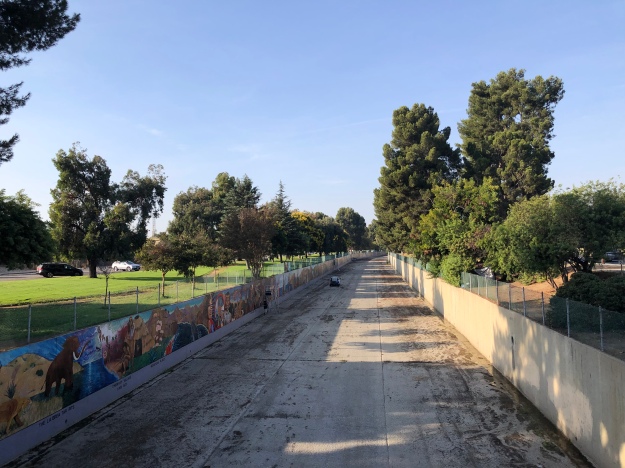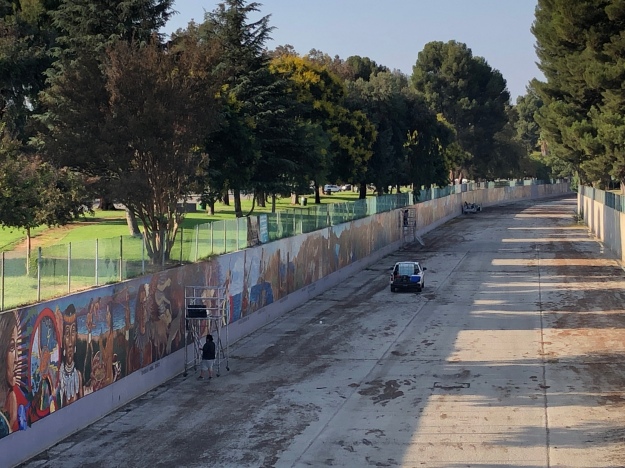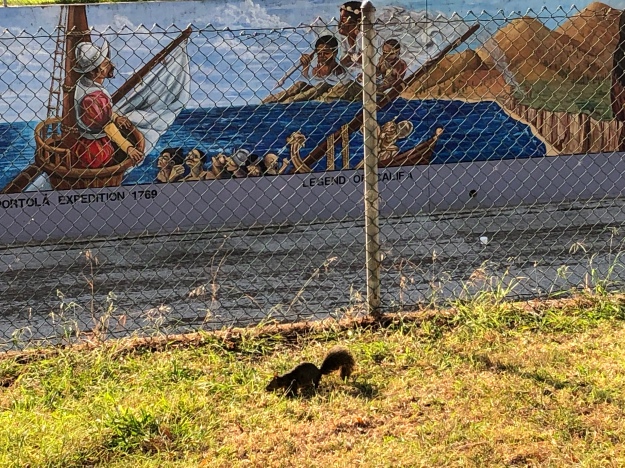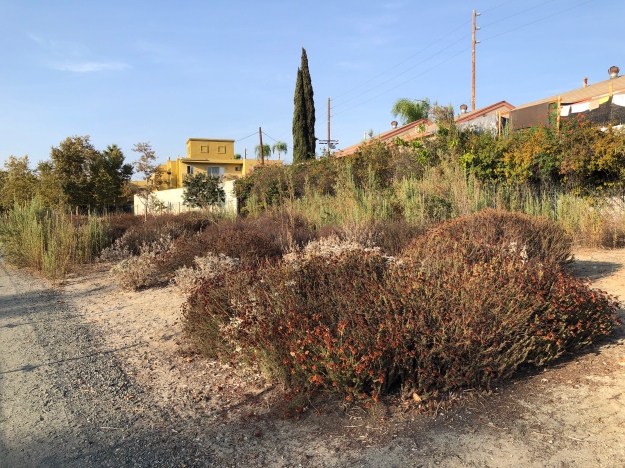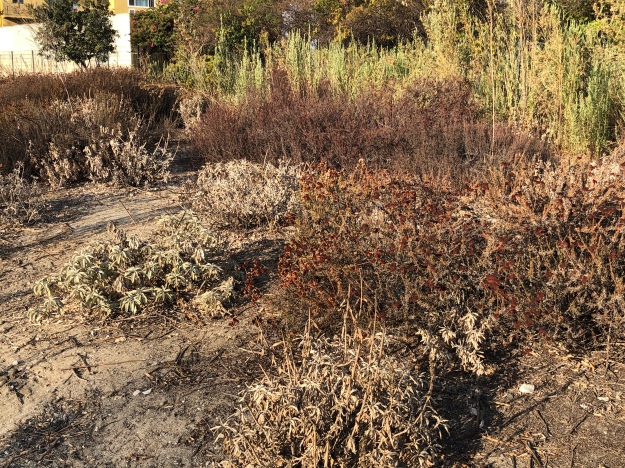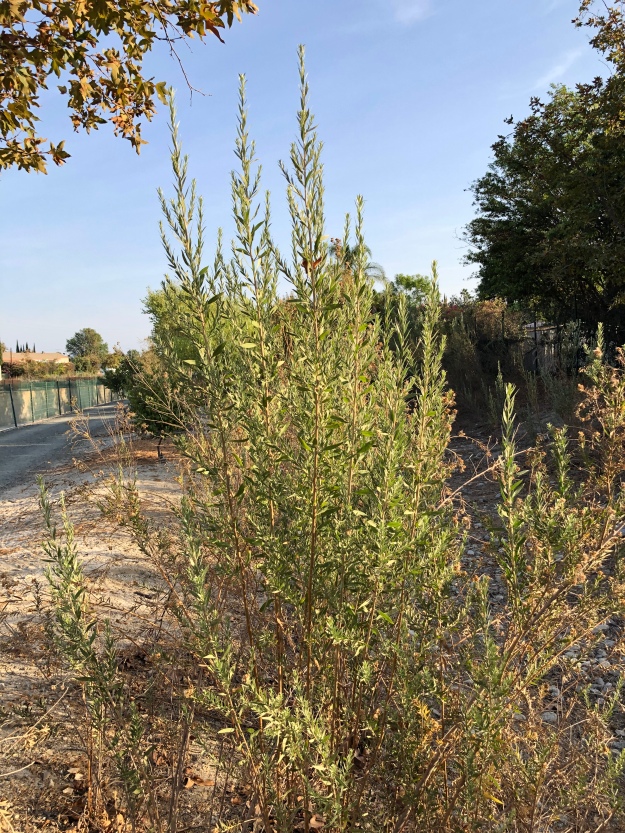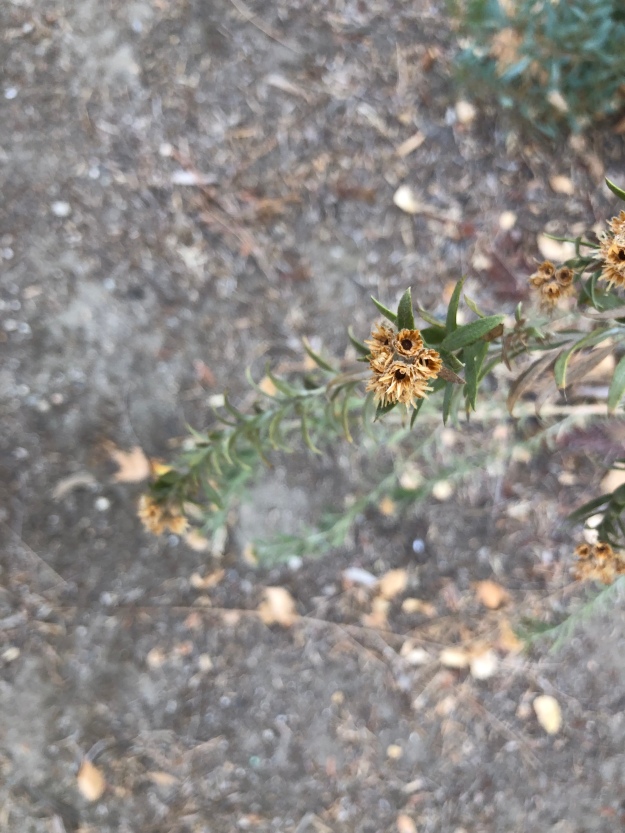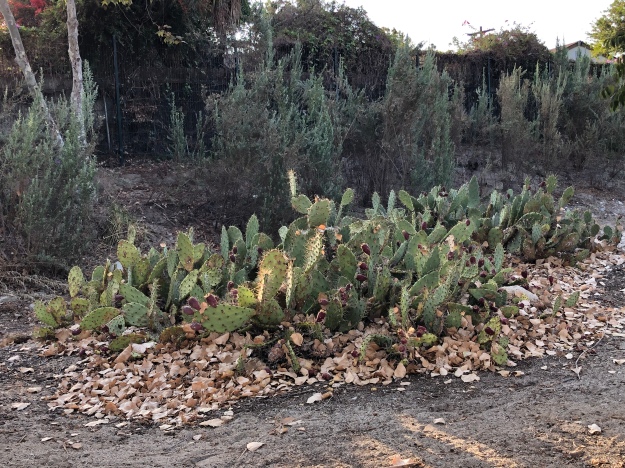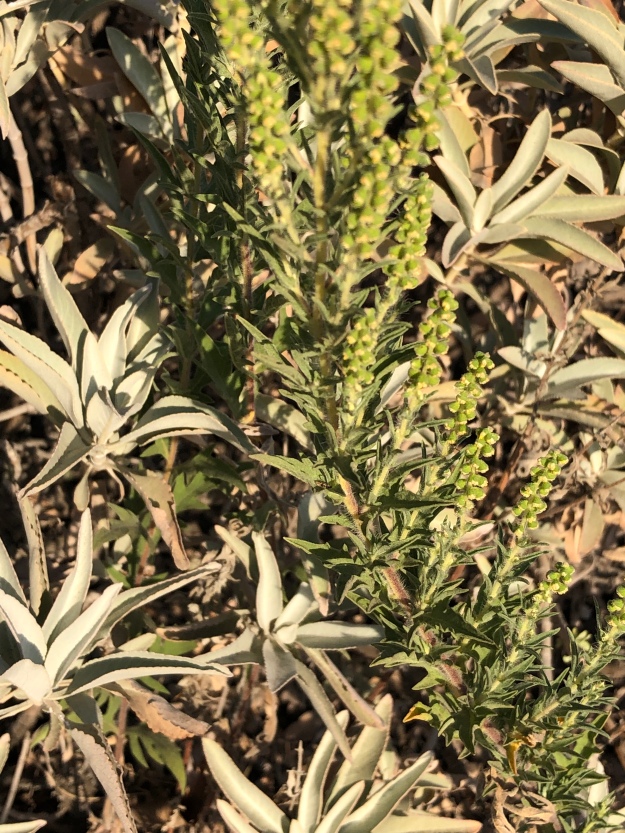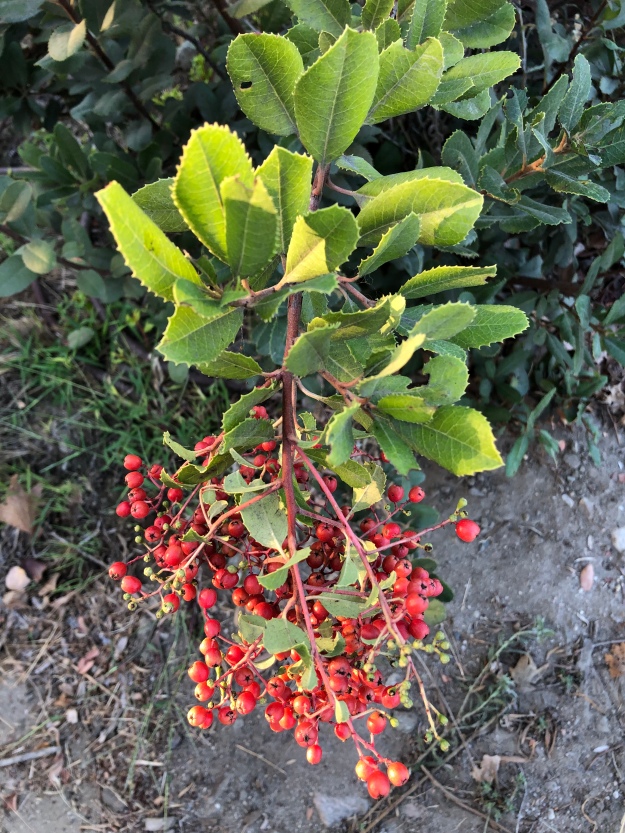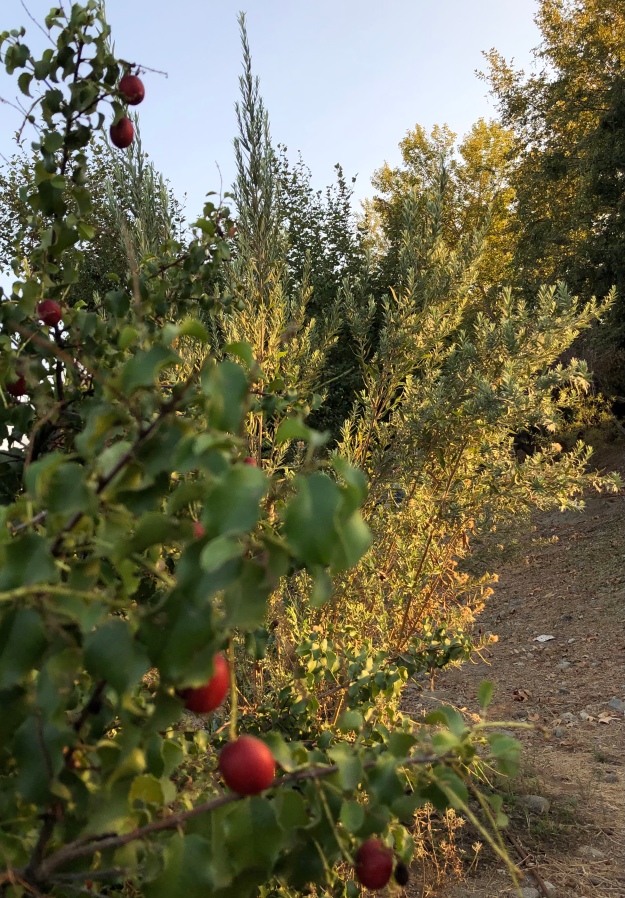Off La Tuna Canyon Road in the green Verdugo Hills, lies a slot-canyon dubbed The Grotto, with cascades I dubbed Flow Falls. The View first arrived, gawping in wonder, in early 2019 after fire and storms had rejuvenated the canyon. Afterwards there was re-growth, another eruption of fire, and some vandalism. But in the last three years as a whole, the CFP has blown me away with its resilience.

https://drive.google.com/file/d/1J_us3k8FghFovQC7sTh7RpSEwTO3utqh/view?usp=drivesdk
https://valleyvillage.home.blog/tag/la-tuna-canyon-park/
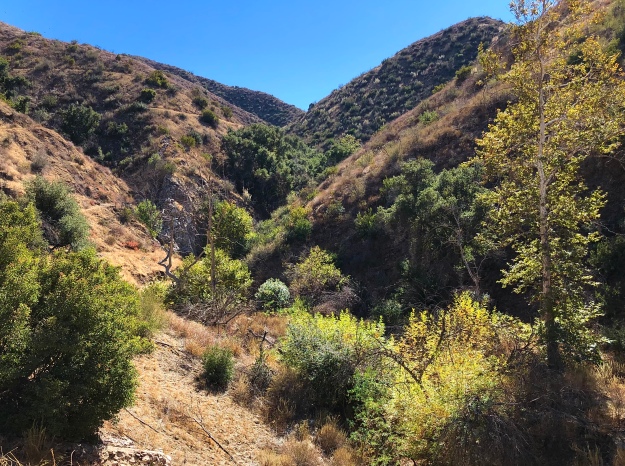
It is not immune to the galloping mineralization regime emerging in other ex-vulcanized hills in our watershed. But it’s clearer to me how the CFP has been, is being, entrained by the harsh regime of natural selection in these geological hot spots. Let’s take a reView of these rocks and rills, woods, and templed hills.
FEBRUARY, 2019


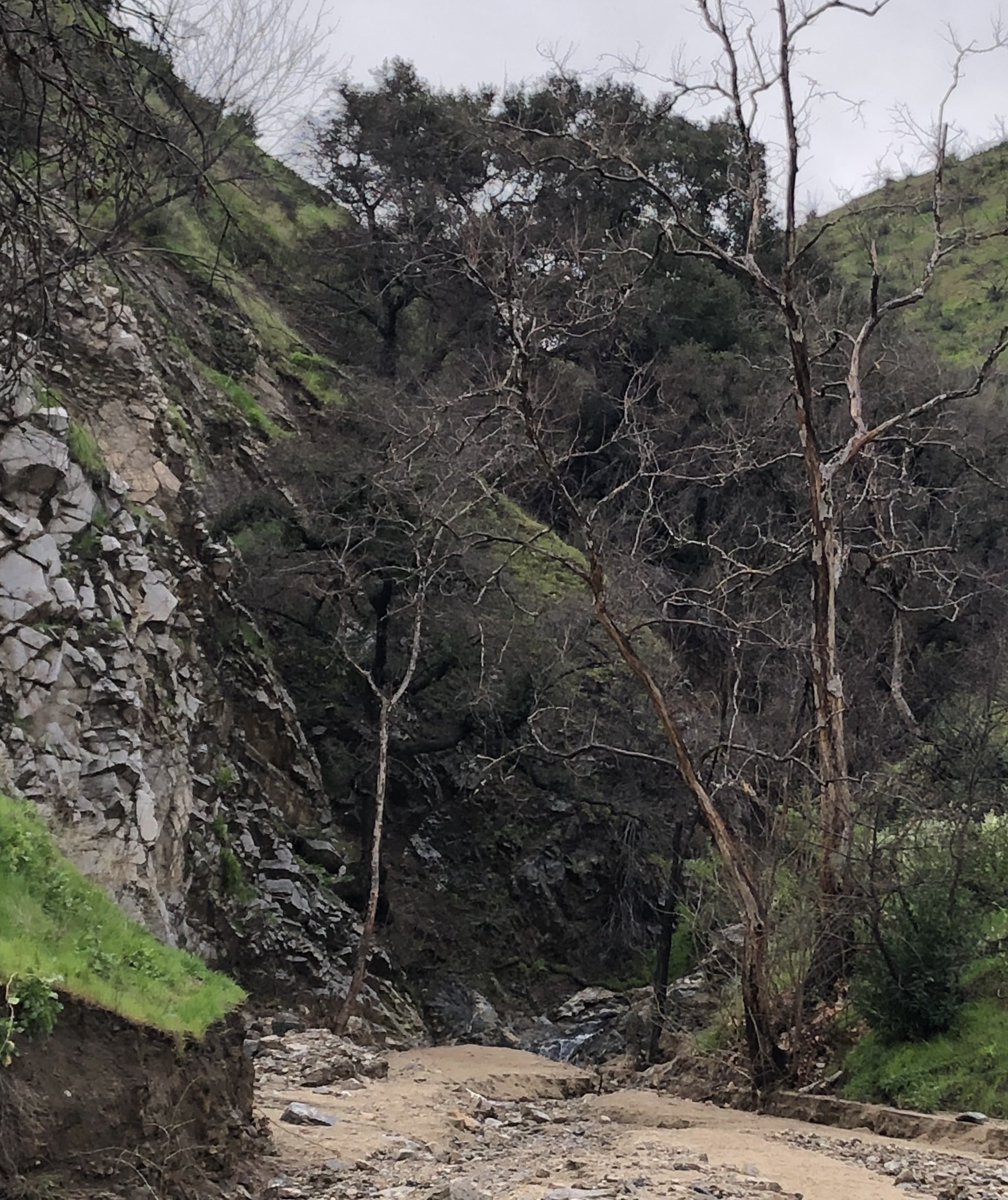





OCTOBER, 2021



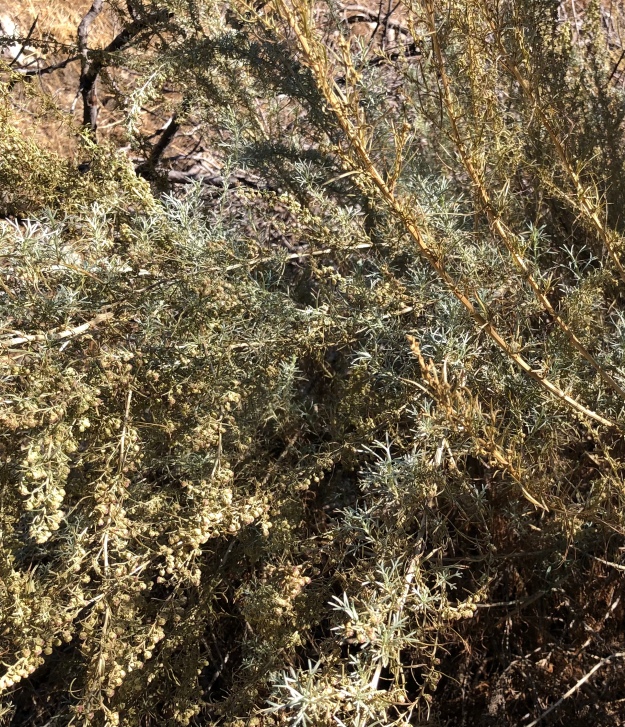


Tiny red blossoms of Artemisia californica, known as sagebrush. A primary aromatic of LA hiking.


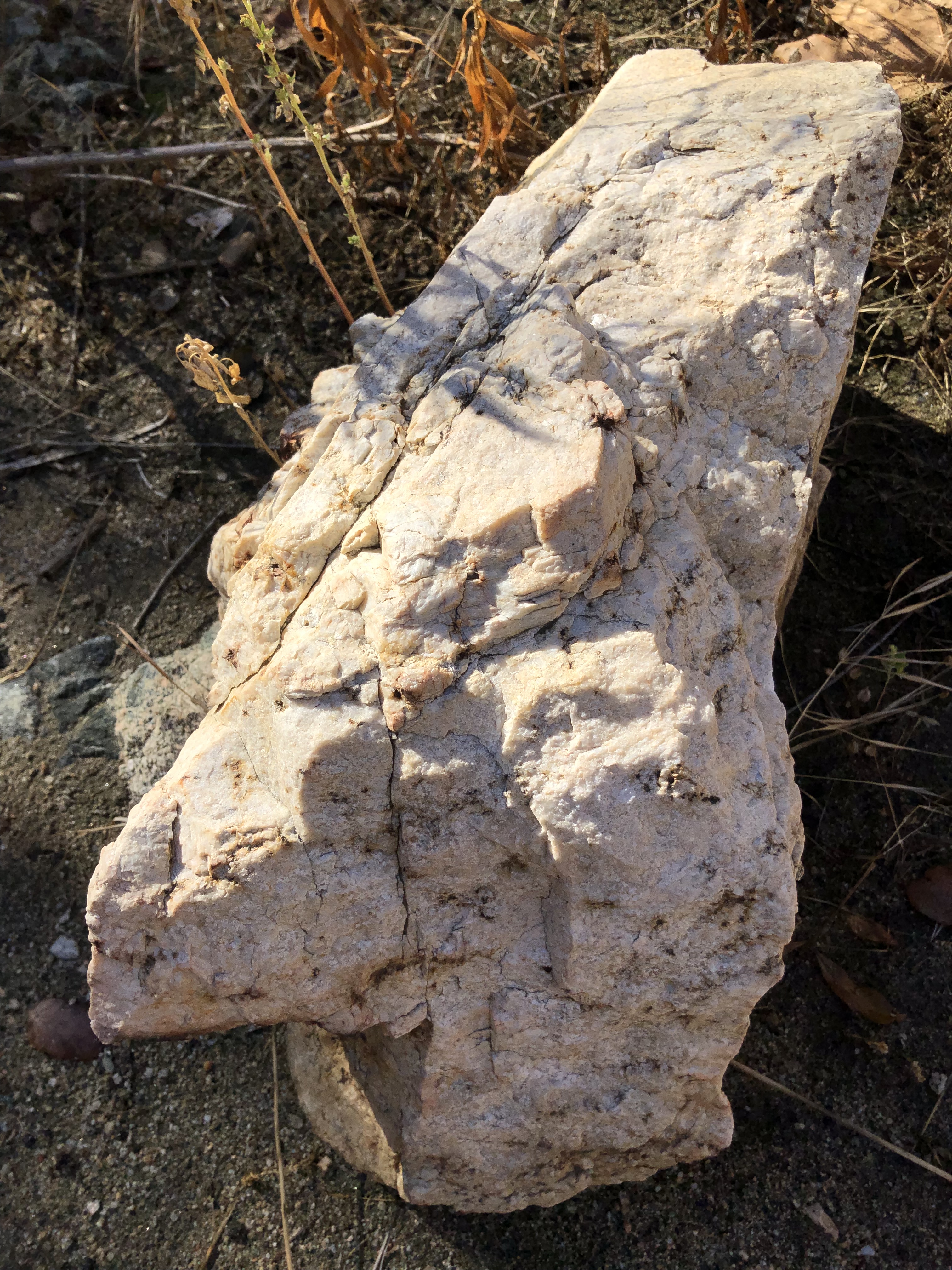



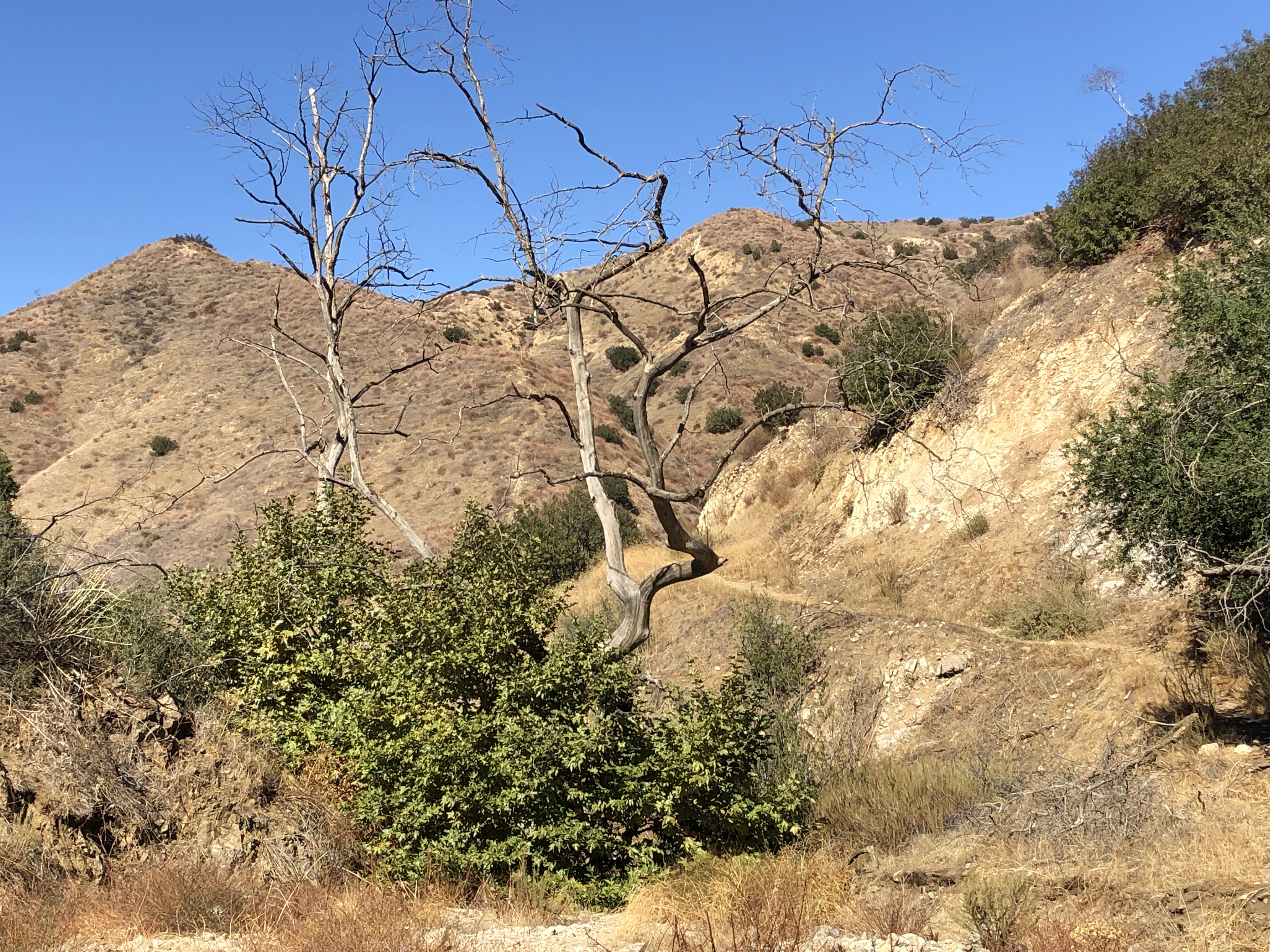

ABOVE, TODAY: The poison oak loves the edges of a porphyry. I love its fall colors. The creekbed is sporting deerweed now, a great recovery plant; it fixes nitrogen in the soil. Deerweed in general is very partial to hydrothermal waters. Why?.🤷🏽♂️ Back to the past:
MARCH, 2019


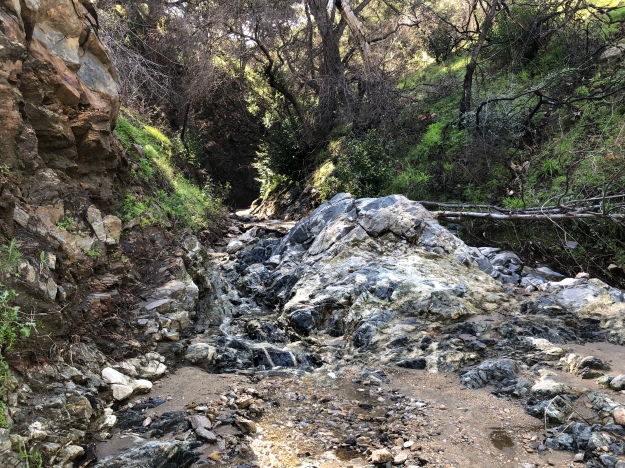
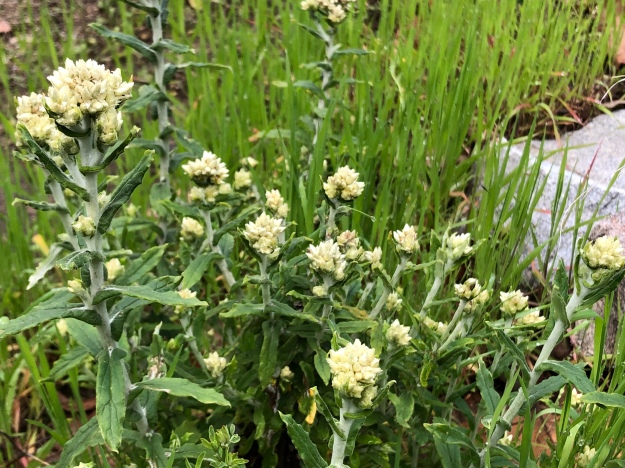

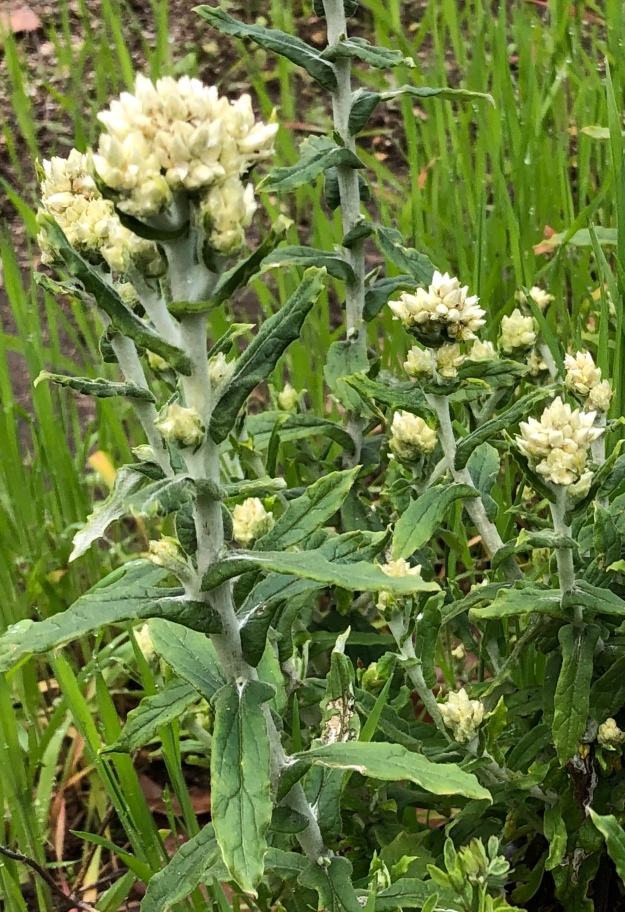
Asclepias erosa — Ca. Desert Milkweed 



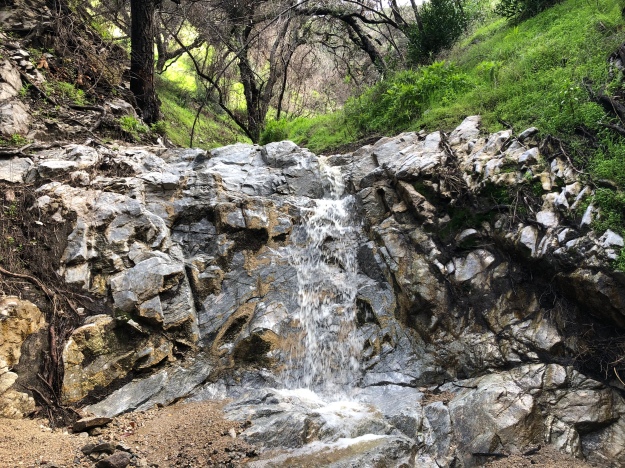

As soon as I understood the elusive perfume was coming from the glossy leaves above, I knew that this shrub must be California Bay, Umbellularia californica. The titular ”umbles” are the sweet yellow flowers. It took more visits to realize that Ca. bay isn’t a shrub at all, it’s a proper tree; and that many, if not most, of the huge scorched trunks in the spillway were bay; and that they were alive in the roots, and would try hard to return; and that they had probably been through the cycle several times. This canyon is the most impressive bay grove I have ever seen.

Below, the same View today (as close as the poison oak allowed me to get).
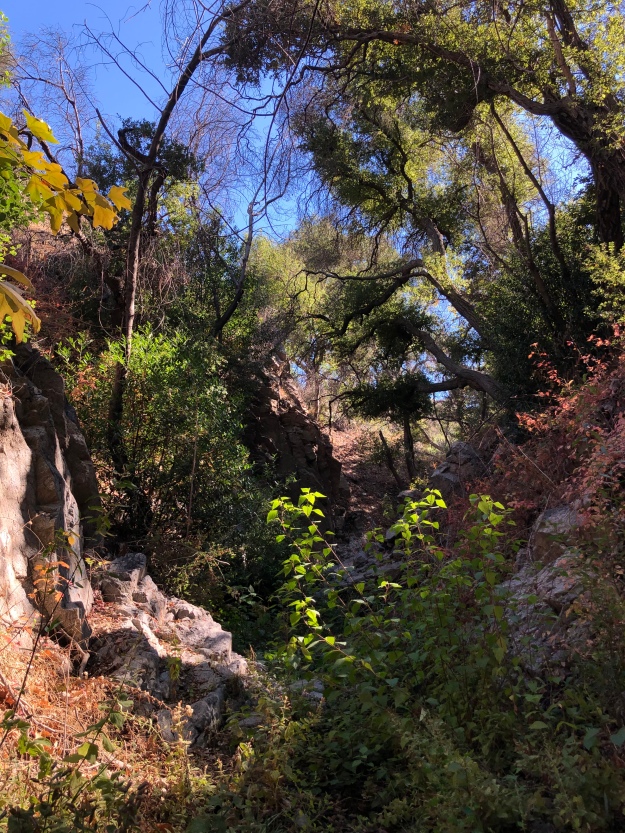
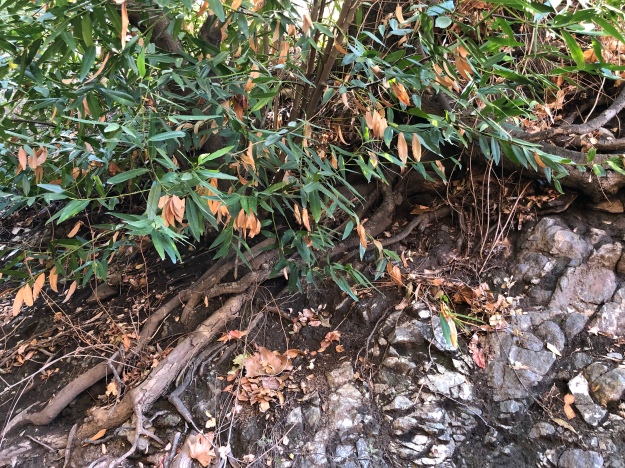



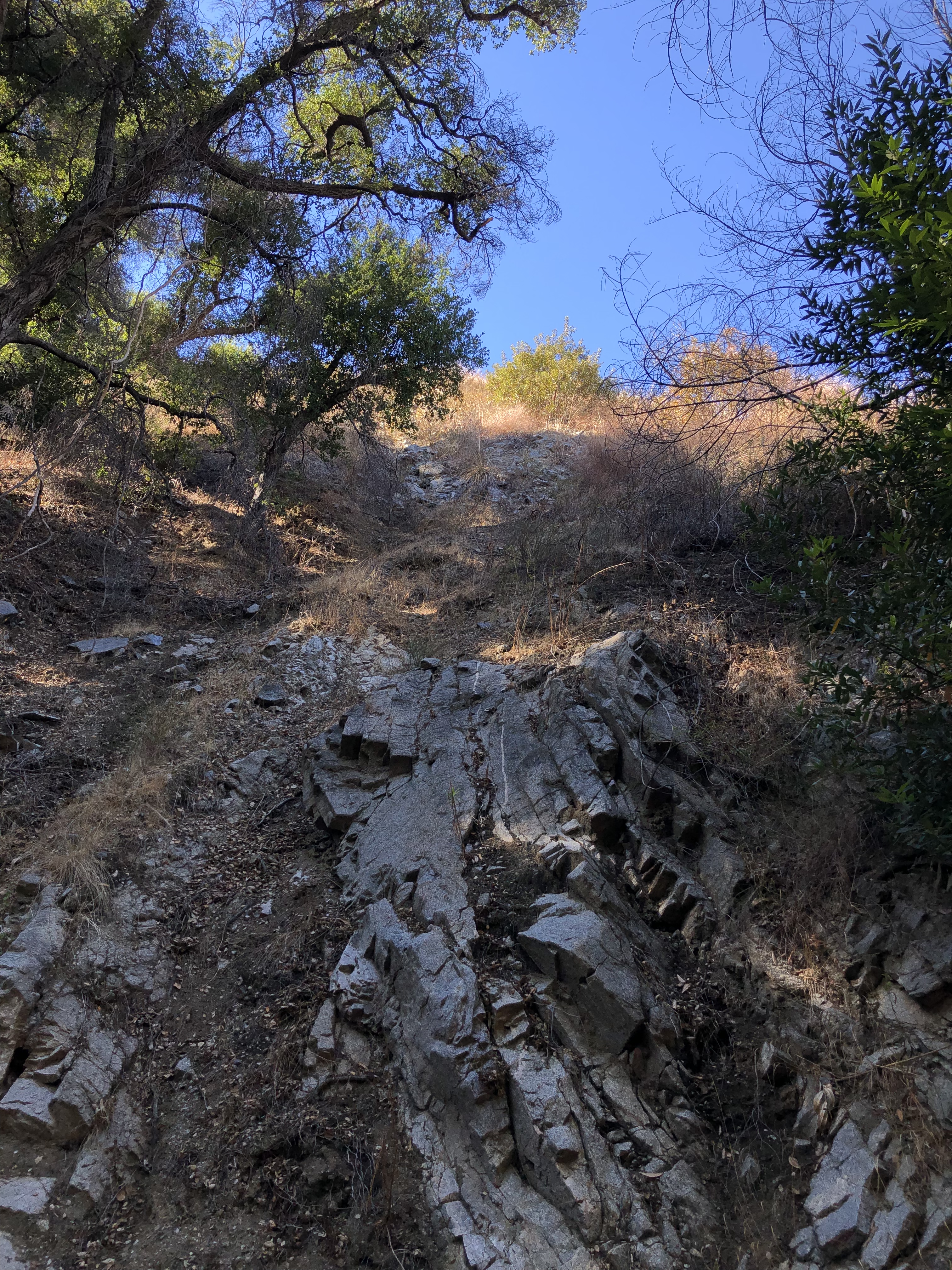


BELOW, APRIL, 2019: The vine with triangle leaves and white whorls is Calystegia macrostegia, [Channel] Island morning glory. Beside it is a fine stand of giant wild rye, presumably evolved in the Pleistocene as mammoth munch.
In the upper canyon the rocks change. There are huge chunks of what looks like compressed Chatsworth Formation, blocks of old undersea sandstone, on top of all the metamorphic rock, and where they met, another staggeringly beautiful lava flow gushed thenceforth. I’m supposing the flow is anorthosite; and I’m supposing the great broken ribs poking through the lower canyon’s walls are the anorthosite ducts (dykes really) that brought it up to this cleft to spill.
This steep notch attracted the mugworts; I noticed because I had just learned about the plant’s ritual use in the Chinigchinich religion. The bright green leaves are Artemisia douglasiana; not in flower yet. The fragrant fuzzy leaves were used to heal skin cuts in the puberty ritual. The cream-flowering beauty is Artemisia ludoviciana, that is, “the mugwort you find in Louisiana.” Also, in Southern California; I also found one growing on the bricks at Fort Sumter, so we can assume they go across the South. The charred bay trunk is so beautiful, I hope it will stand for a long time.


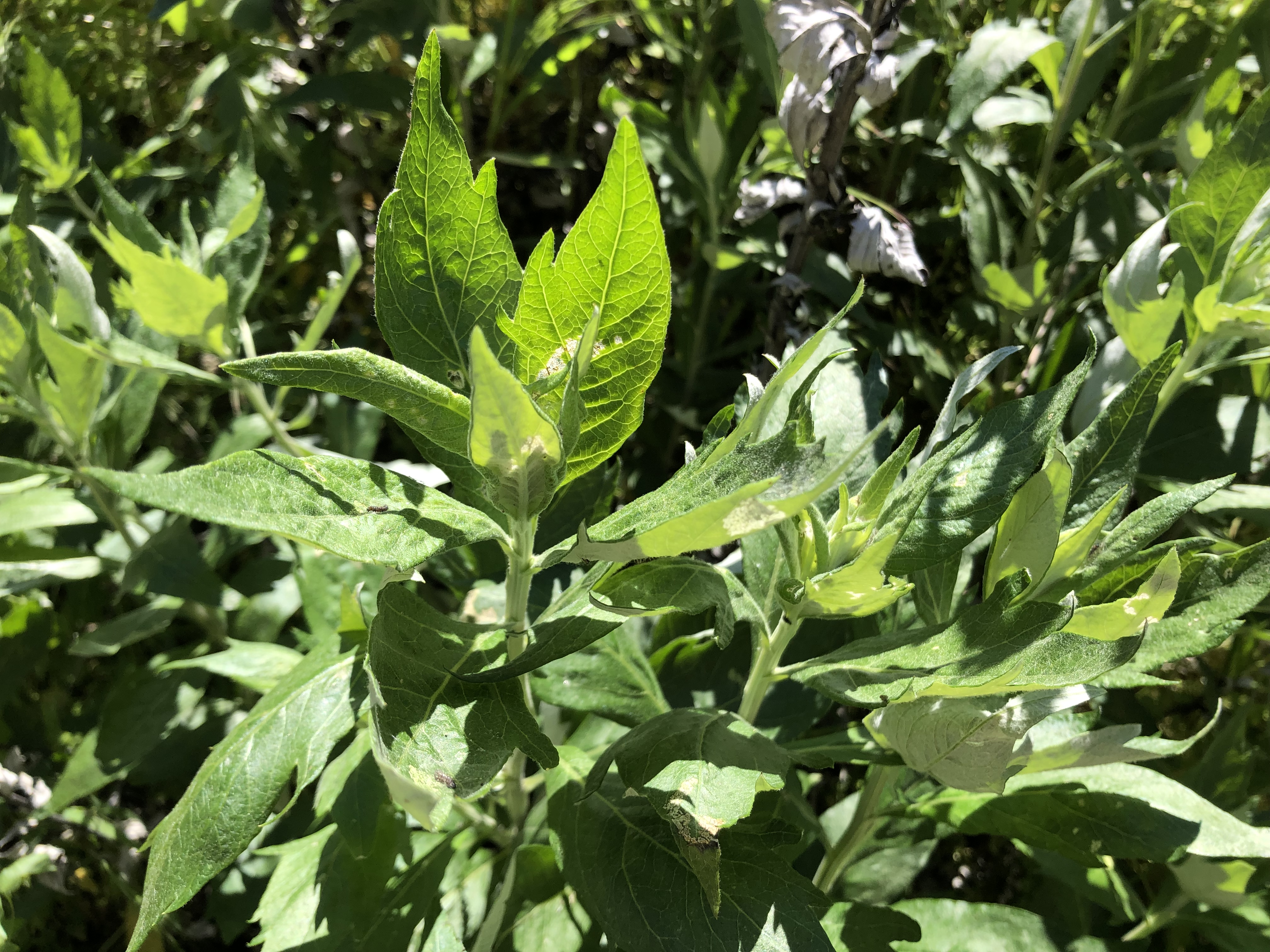

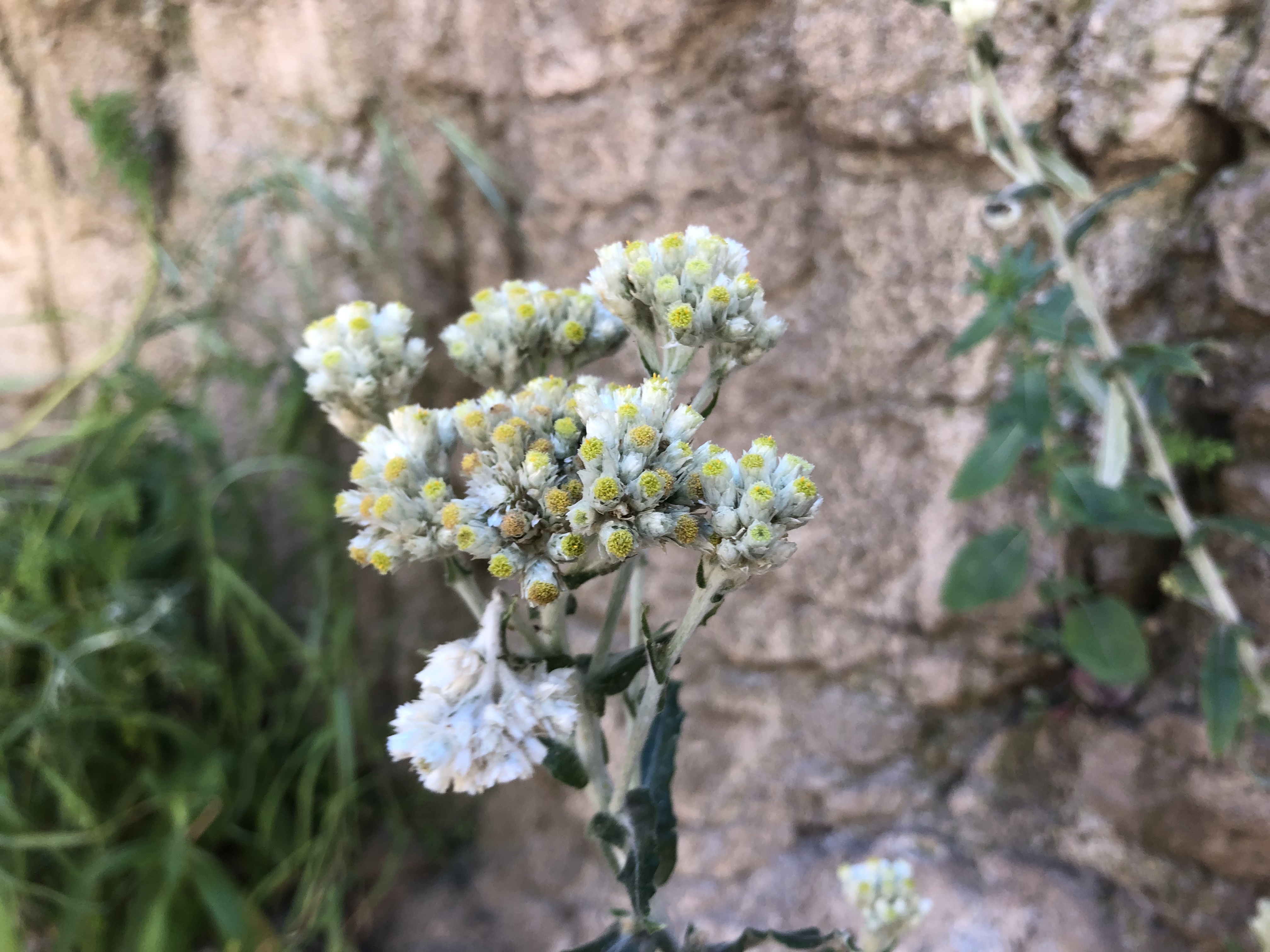

OCTOBER, 2019



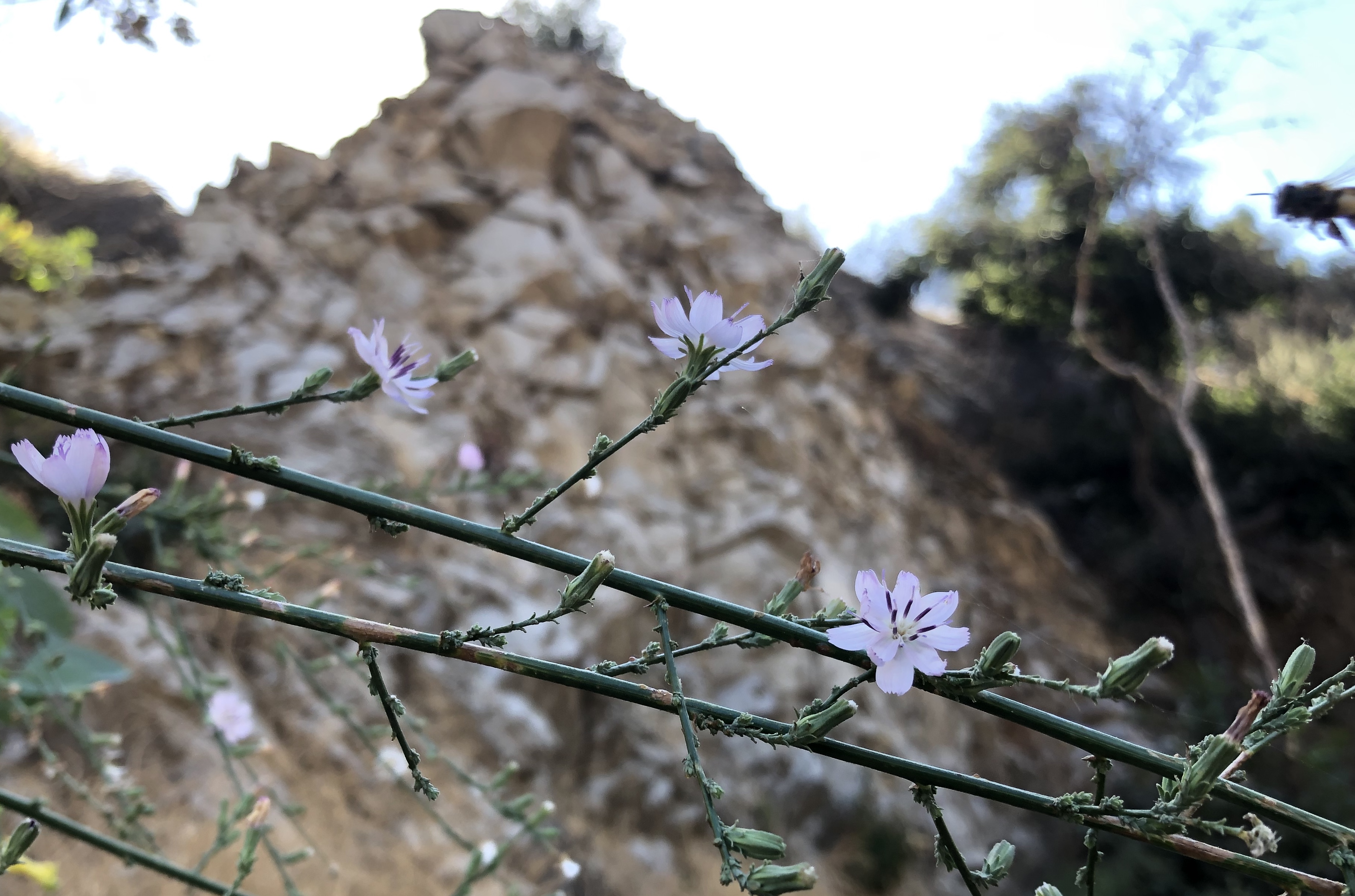





ABOVE: the tree trunks are putting out shoots, laurel sumac doing well on the slopes. Down in the bowl, plenty of those lovely pink asters I cant ID; anonymity doesn’t bother the bee, see. Up in the canyon, Ca. fuchsia dangles red bugles from the walls, a lone scarlet monkey-flower pulls faces, and black nightshade ripens its love-apples to poison black. BELOW: The trees in the syncline, and those flanking the outFlow (sycamore and ash), are working their way back very elegantly. The creek bed had at this point an overgrowth of amaranth, horsetail and tree tobacco, all potentially invasive. (The Nicotiana glauca is invisible in these shots because dealt with by the View). The diagonal pink sill in the curved wall of the slot, so dramatically noticeable when it’s wet, almost disappears into the soil when it’s dry. Fat purple 4-O’Clocks enjoy perching shoulder-high, on the lips of mounds and ridges.
DECEMBER 7, 2019: I noticed there had been another fire episode; a strange one, I thought. The amaranth in the creekbed had all been singed off, as if somebody had torched the tops (a controlled burn to stifle the invasives?) But a big oak on the entrance trail was scorched at the bottom, where bracken was burnt but not consumed. I couldn’t imagine anybody letting a controlled burn get so uncontrolled as to go near that oak. When I look now, I see the scorched patterns in the hillside soil. (They match the spots where mineralization has now emerged.) In particular, the accordion-folded rock in the Grotto that I saw as ”the Syncline” is perhaps better seen as “the Anticline” — and indeed it really should be seen as something like a griffone. Note the nipple-shaped blowhole at the top, and note how everything around it got scorched.
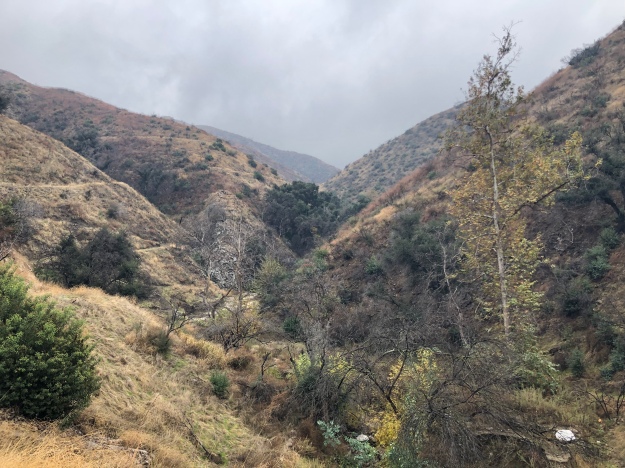
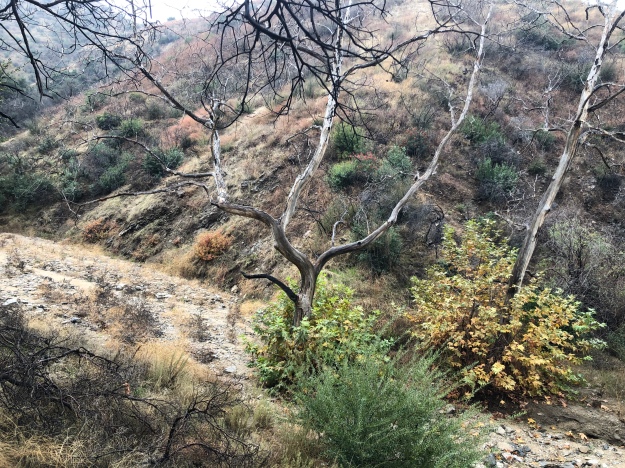
The black circles and parabolas in the hill behind the sycamore may have blasted heat or volatile vapors out over the creekbed, singeing the amaranth and toasting the fringes of the oak in the foreground; see below. 

The hill behind the Anticline is just roasted; but the flames apparently stayed high, further blackening the deadwood trunks, but sparing the new growth lower down. I didn’t go up and in, that day.

Strange again; the oak boughs were incinerated, the giant wild rye unscathed. 
First time I saw Grindellia squarosa aka, curlycup gumweed
JANUARY, 2021 – I didn’t realize, but I skipped the canyon completely in 2020. So, in the pics below, it’s 13 months later, and the beginning of this year. Most of the fresh growth of the sycamores and ashes is gone, only one sycamore kept its leaves that year. Depressing…? Not with that one tree giving its all in fall colors. But my cheers quickly turned to jeers when I saw what some cretins did to Flow.
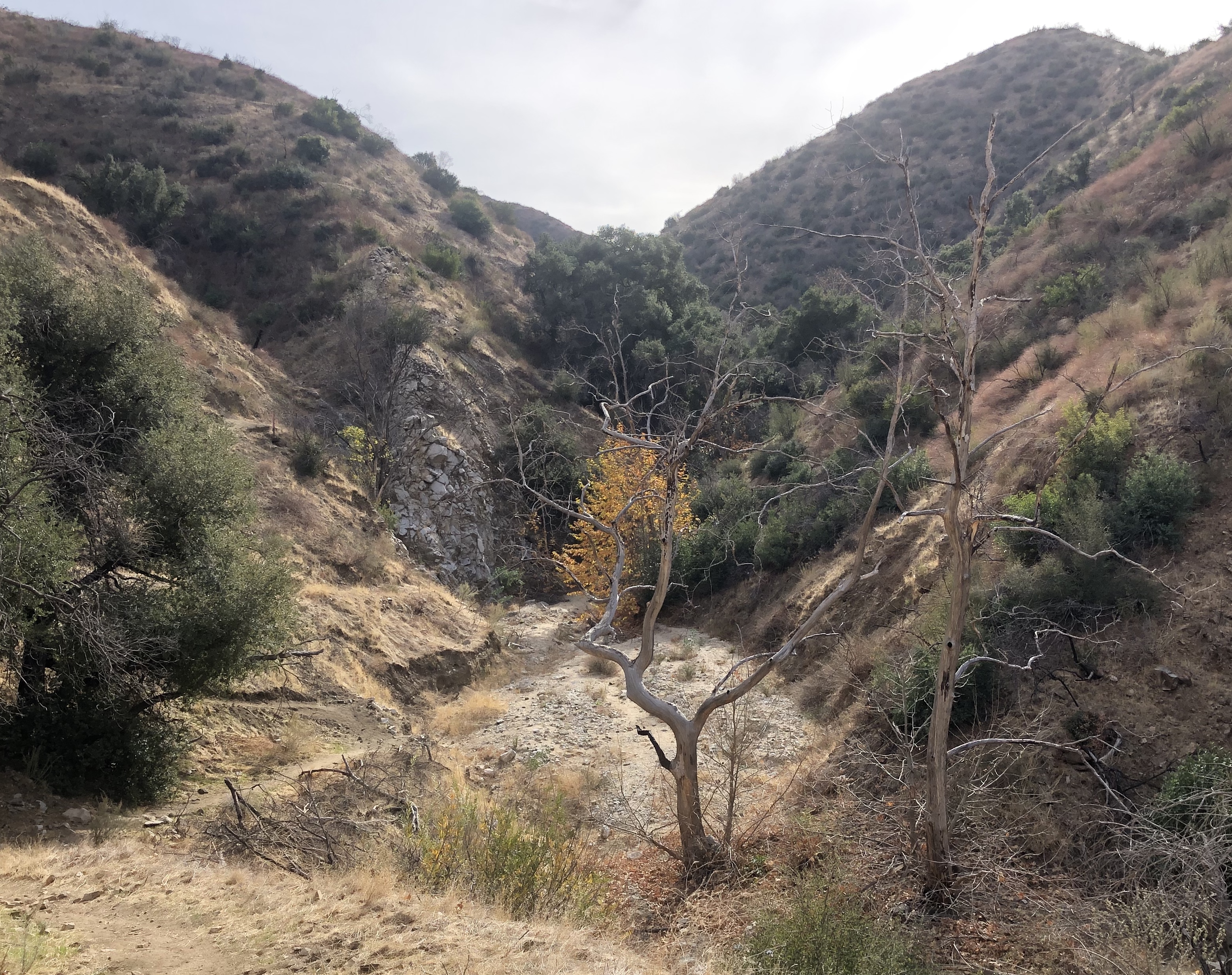
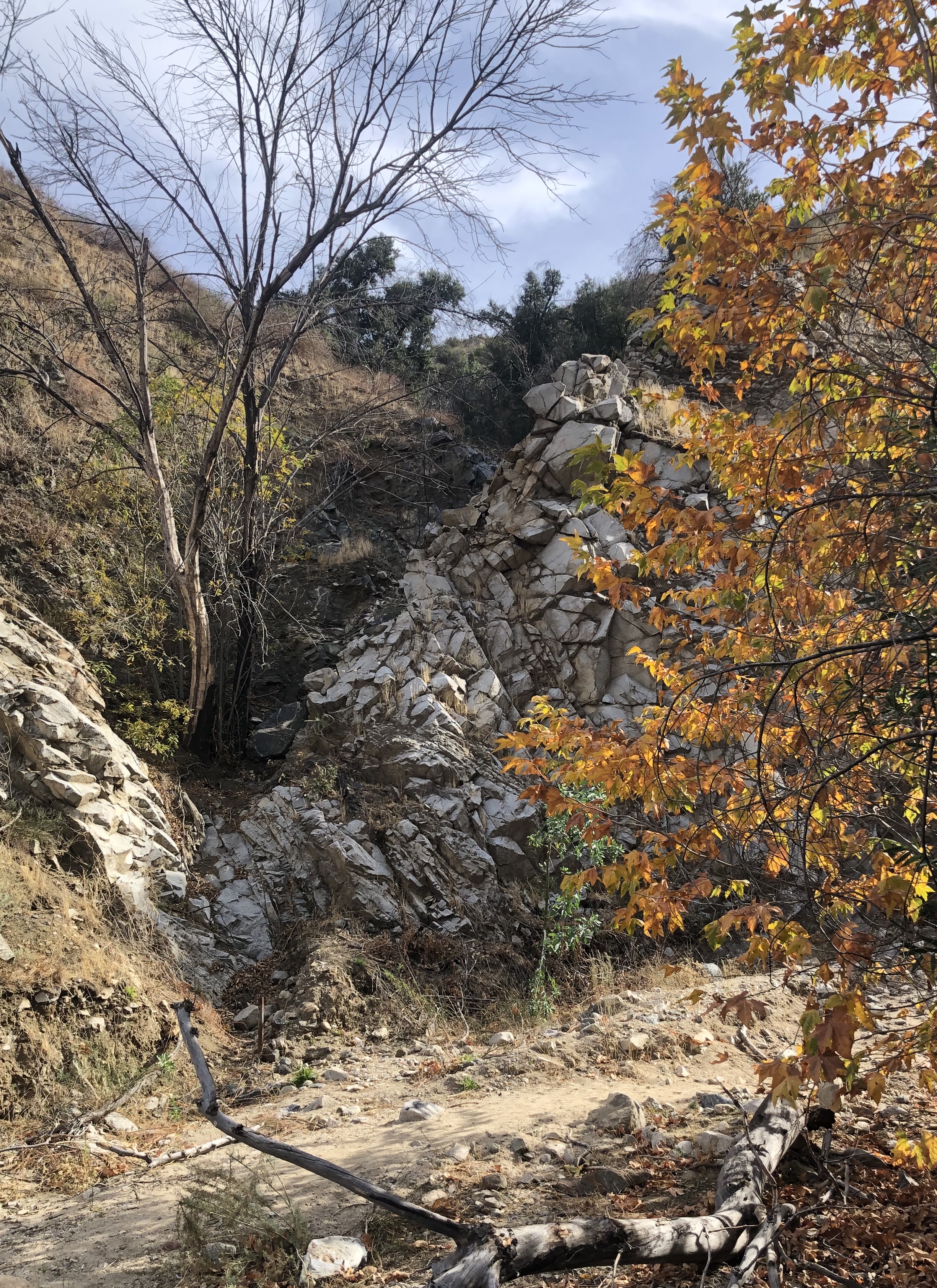


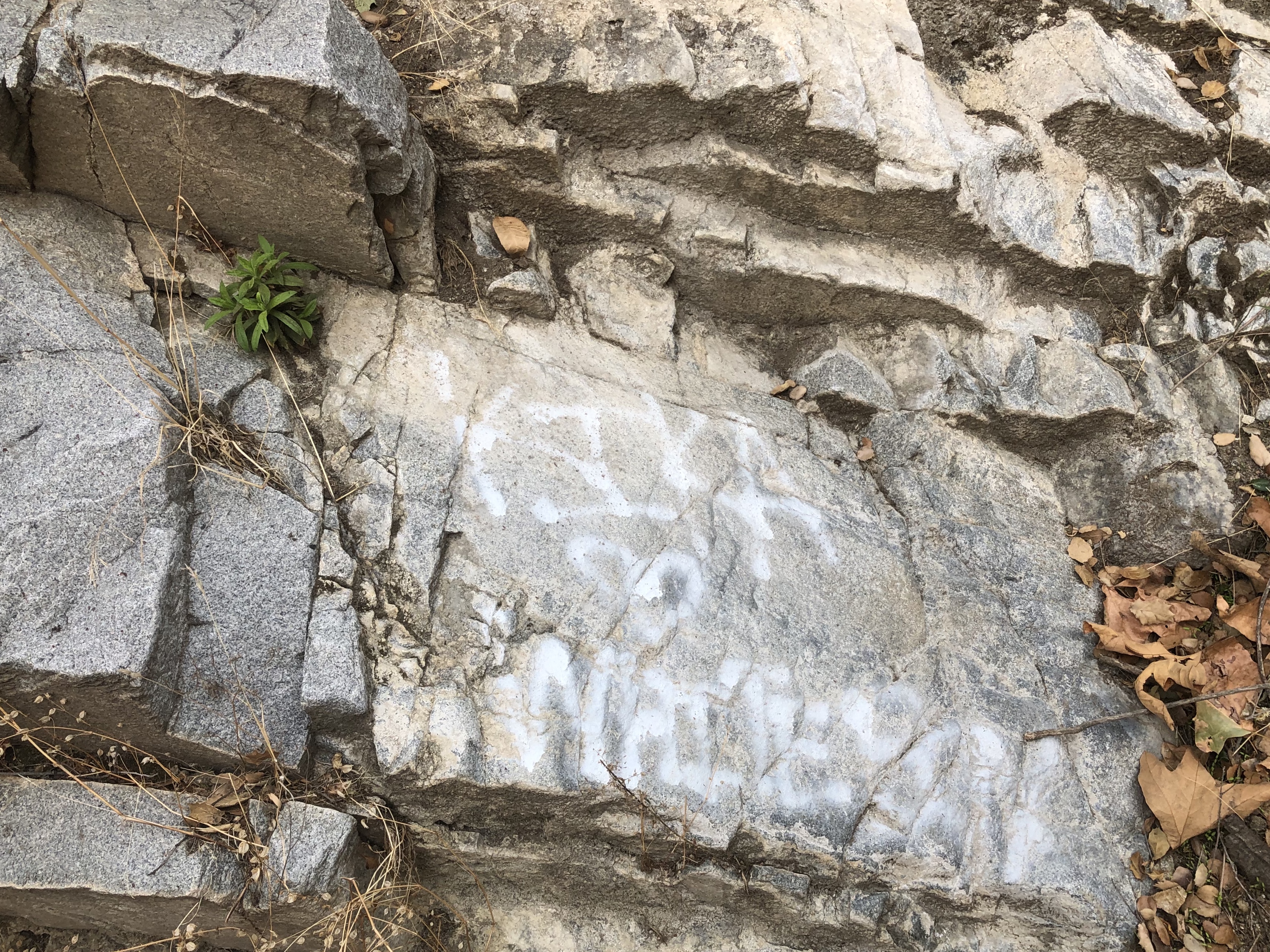

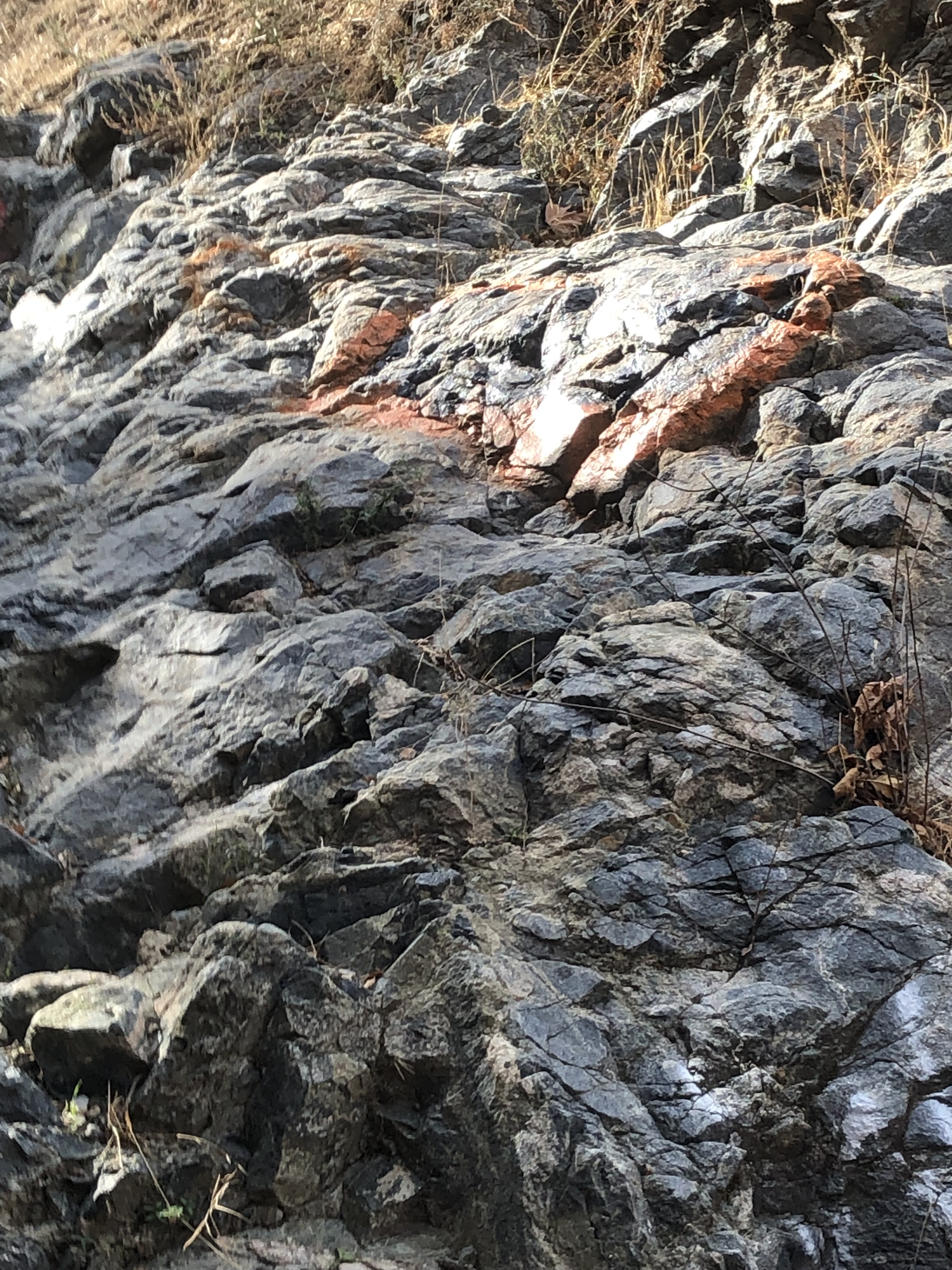
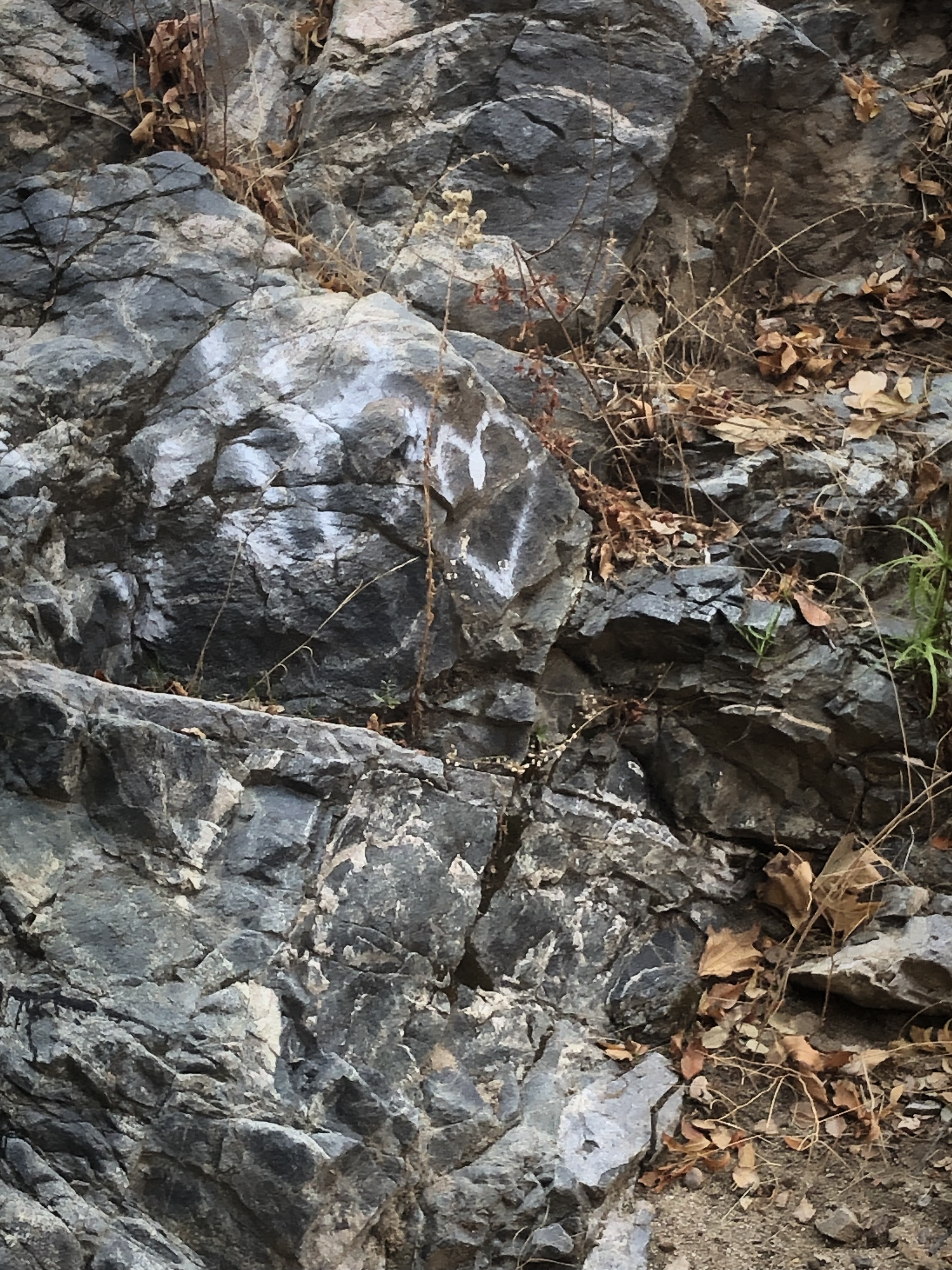
I was especially shocked because the area where Bimbo Bernofsky painted one of her idiotic hearts, the one seen here on the right, was a bit of freshly-exposed rock in Feb, 2019 – I think its facing or shell was blown off by intrusions from behind, or heat or gas buildup or both, just before I found it; it revealed all this great fresh pink (pegmatite?) and blue-black (pillow basalt?). The plywood ”love mattress” I tipped up and off to the side. It’s there still; I’d have to strap it to the top of the car to haul it out. I probably will have to, some day. I choose to think the gods punish those who desecrate their sacred spots. There are plenty of winding turns on the canyon roads, and enough roadside crosses and shrines to feed my hope.

Now and forever 
Then

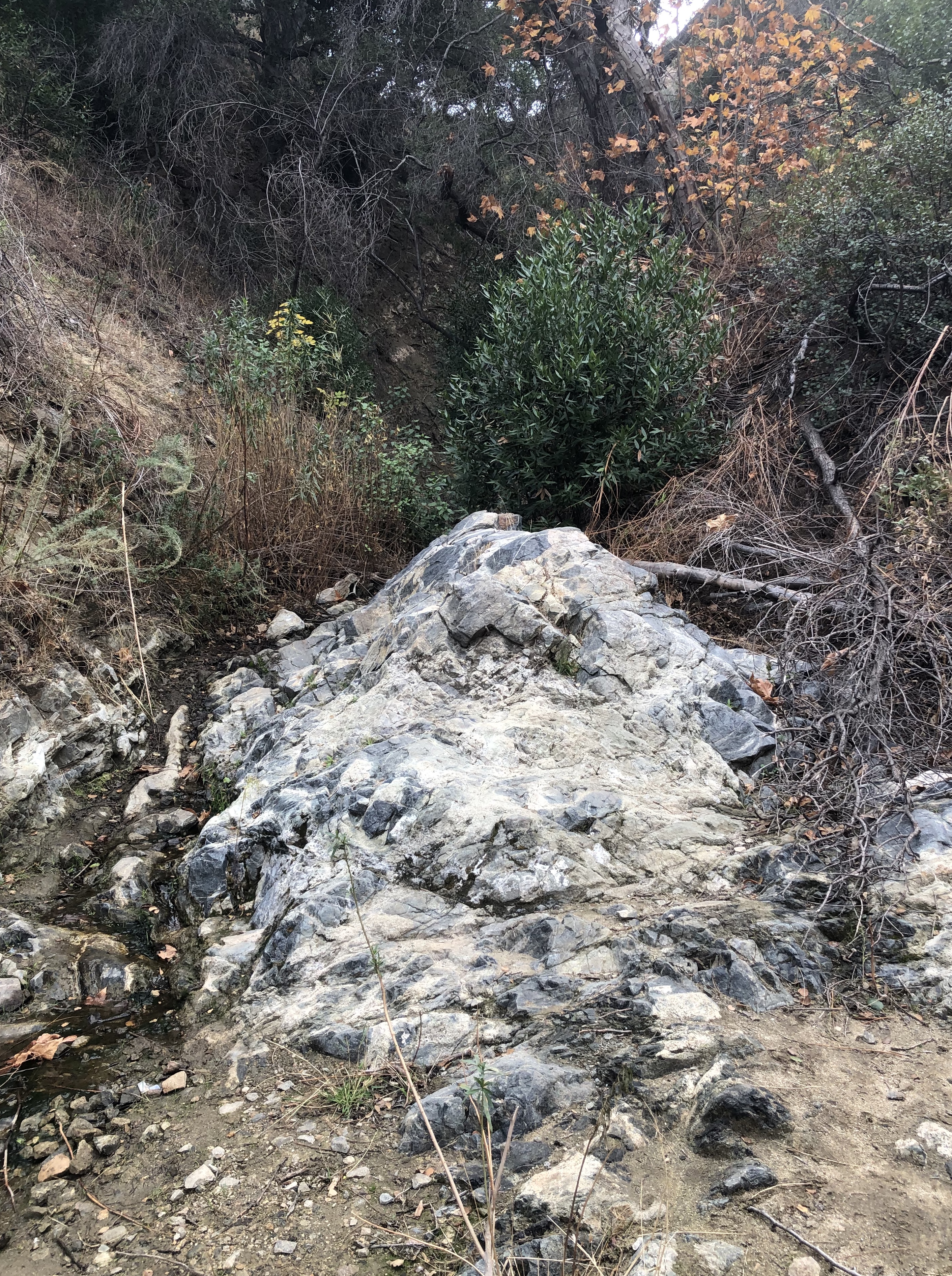






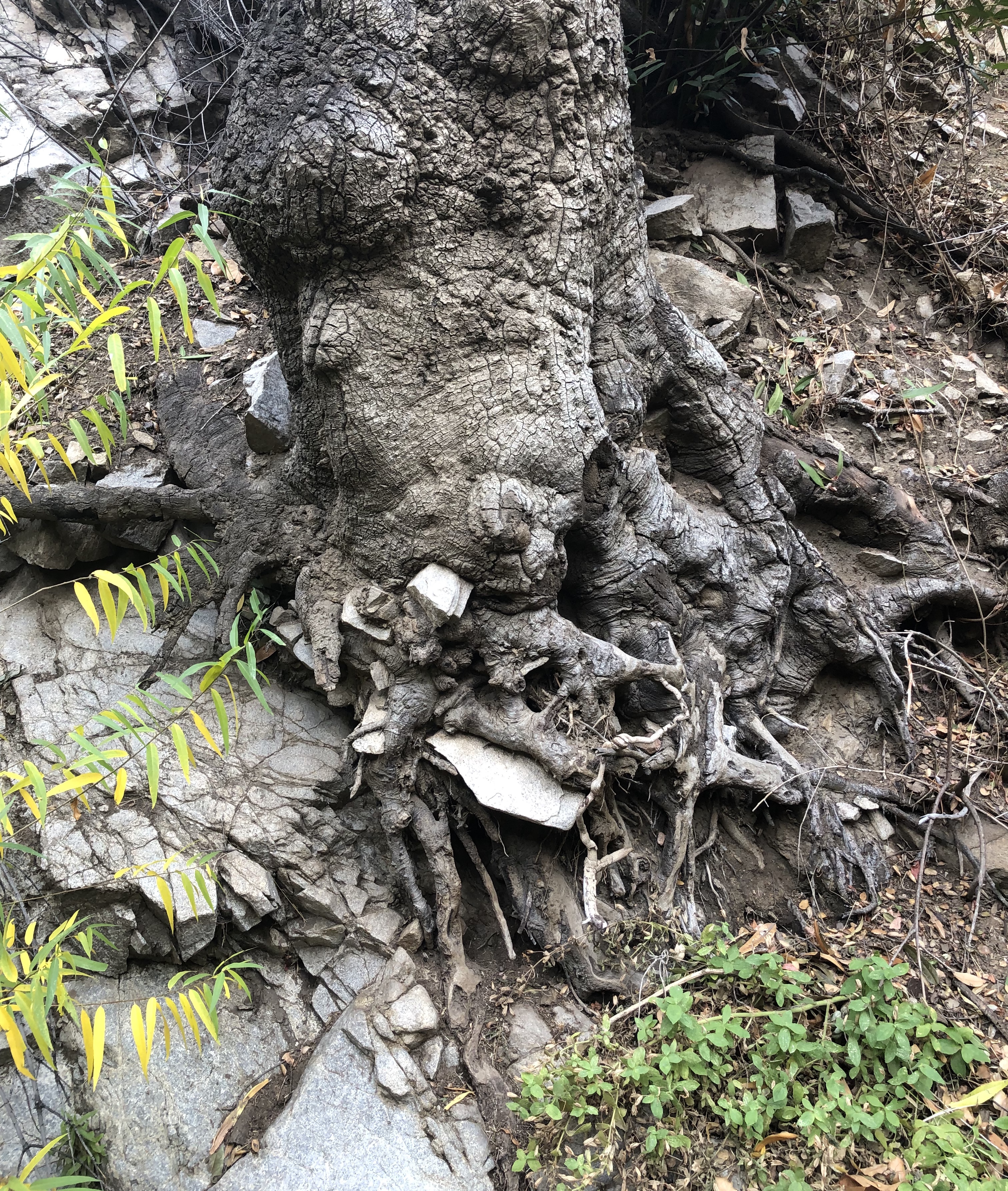




The bamboo-like saplings with yellow leaves are Ca. black walnuts, Juglans californica.
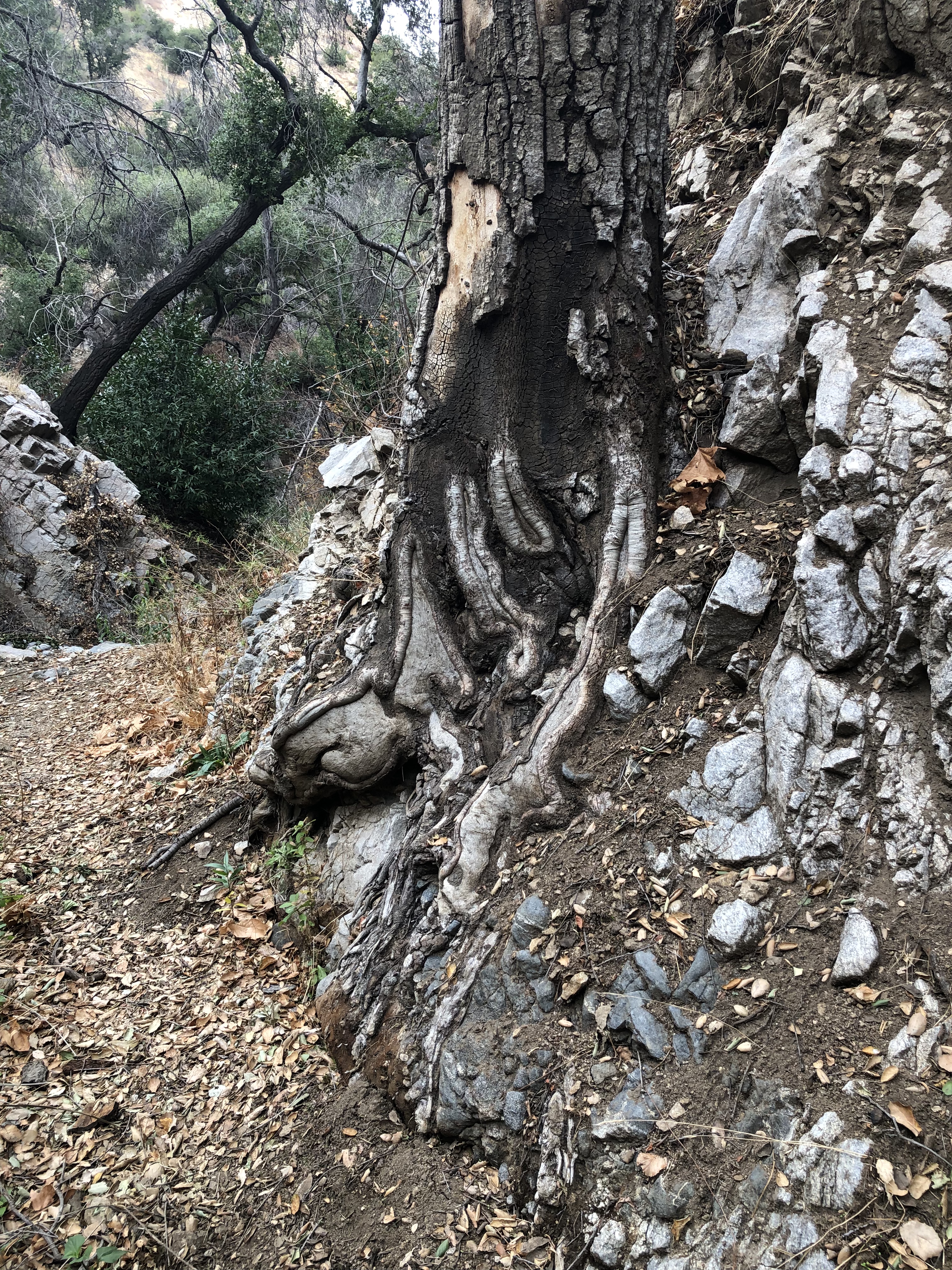






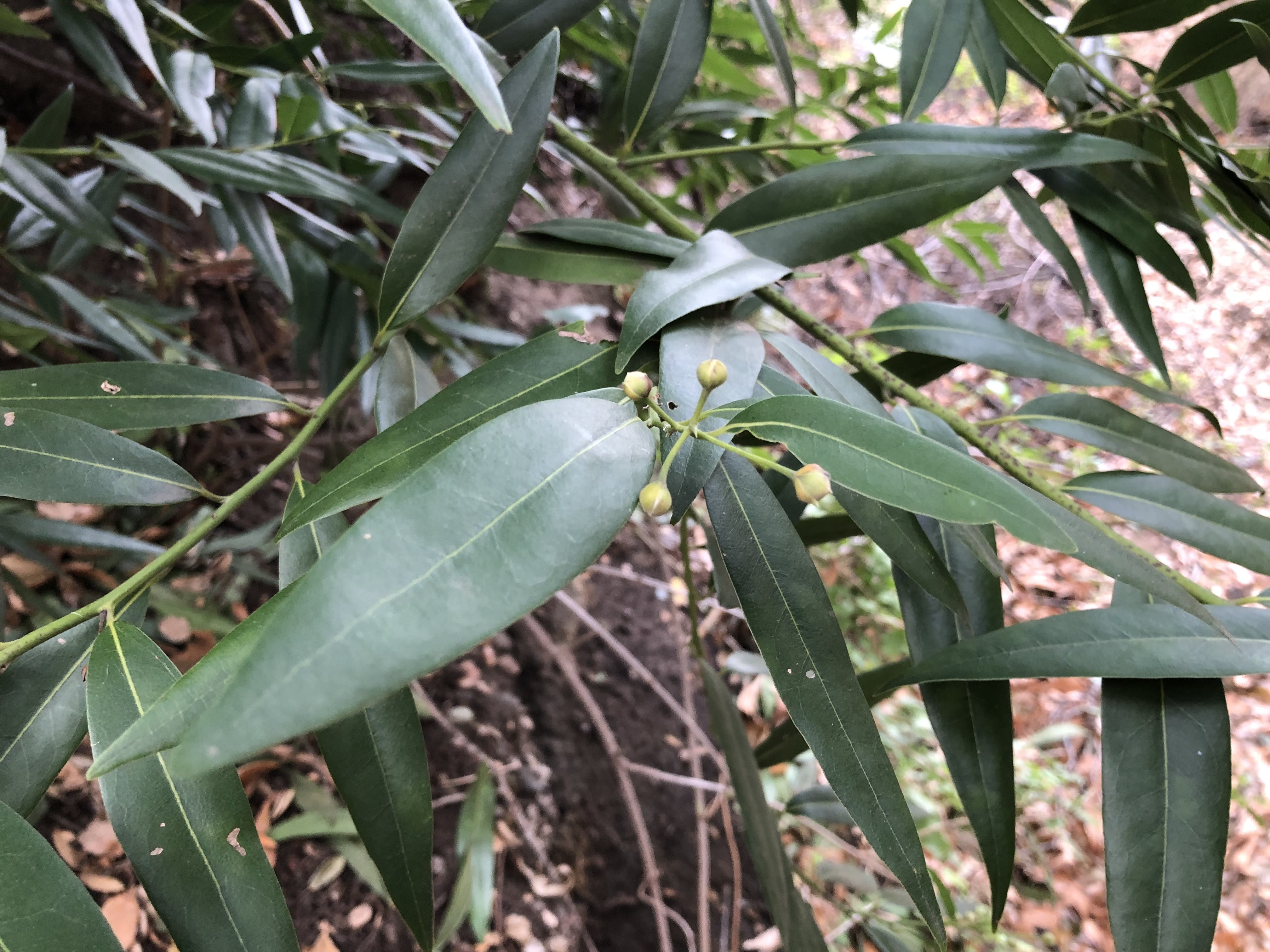

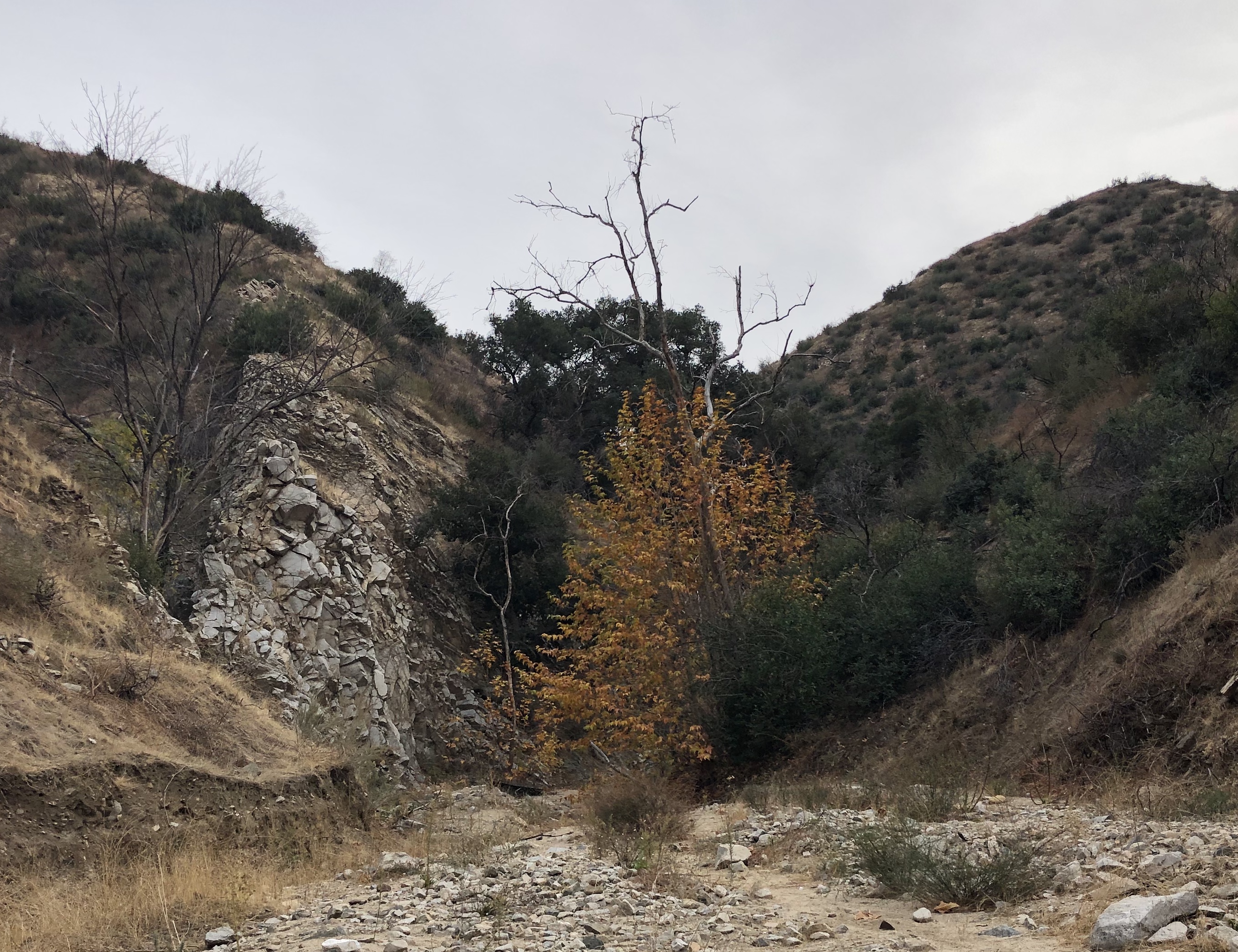

ABOVE: In January of this year, the pre-signs of mineralization weren’t obvious, but the fact that the trees had lost most of their skirting-shoots, was. Those have grown back, but BELOW: by October, the signs of hydrothermal venting were unmistakable. Whatever is happening to the upper LA River watershed, can be glimpsed here in all its avatars, within a span of a few hundred yards. Vest-pocket porphyries?
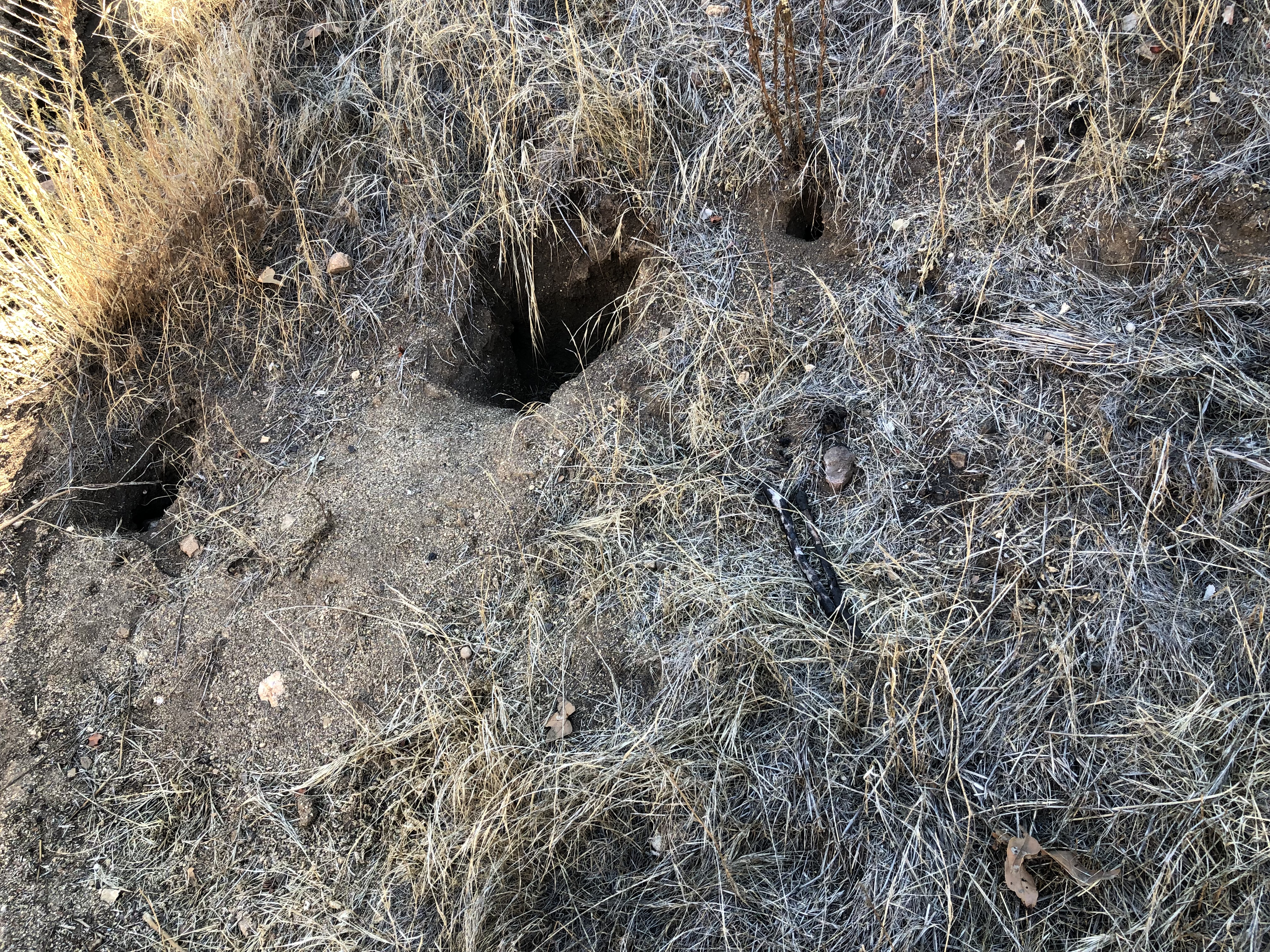

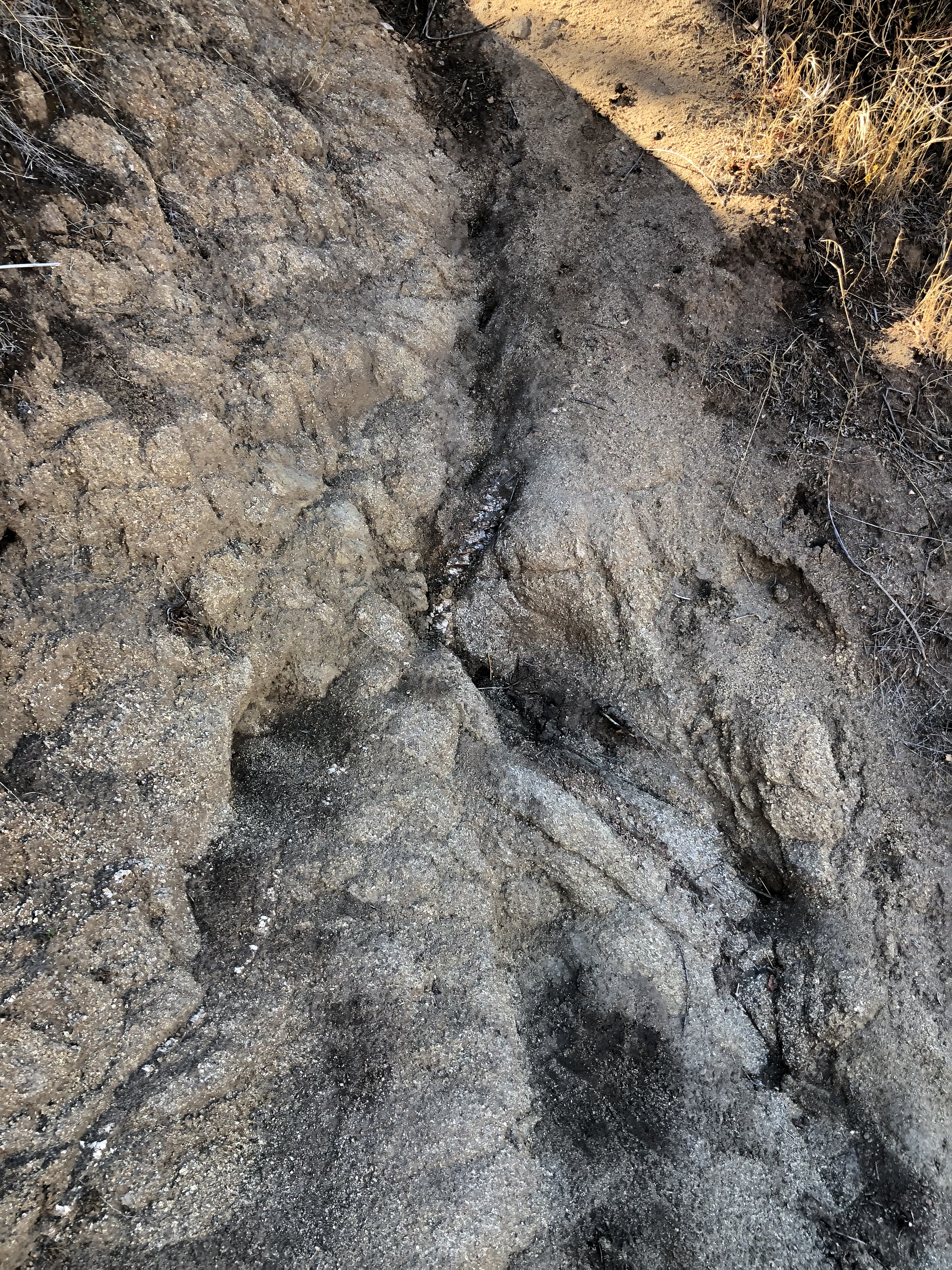

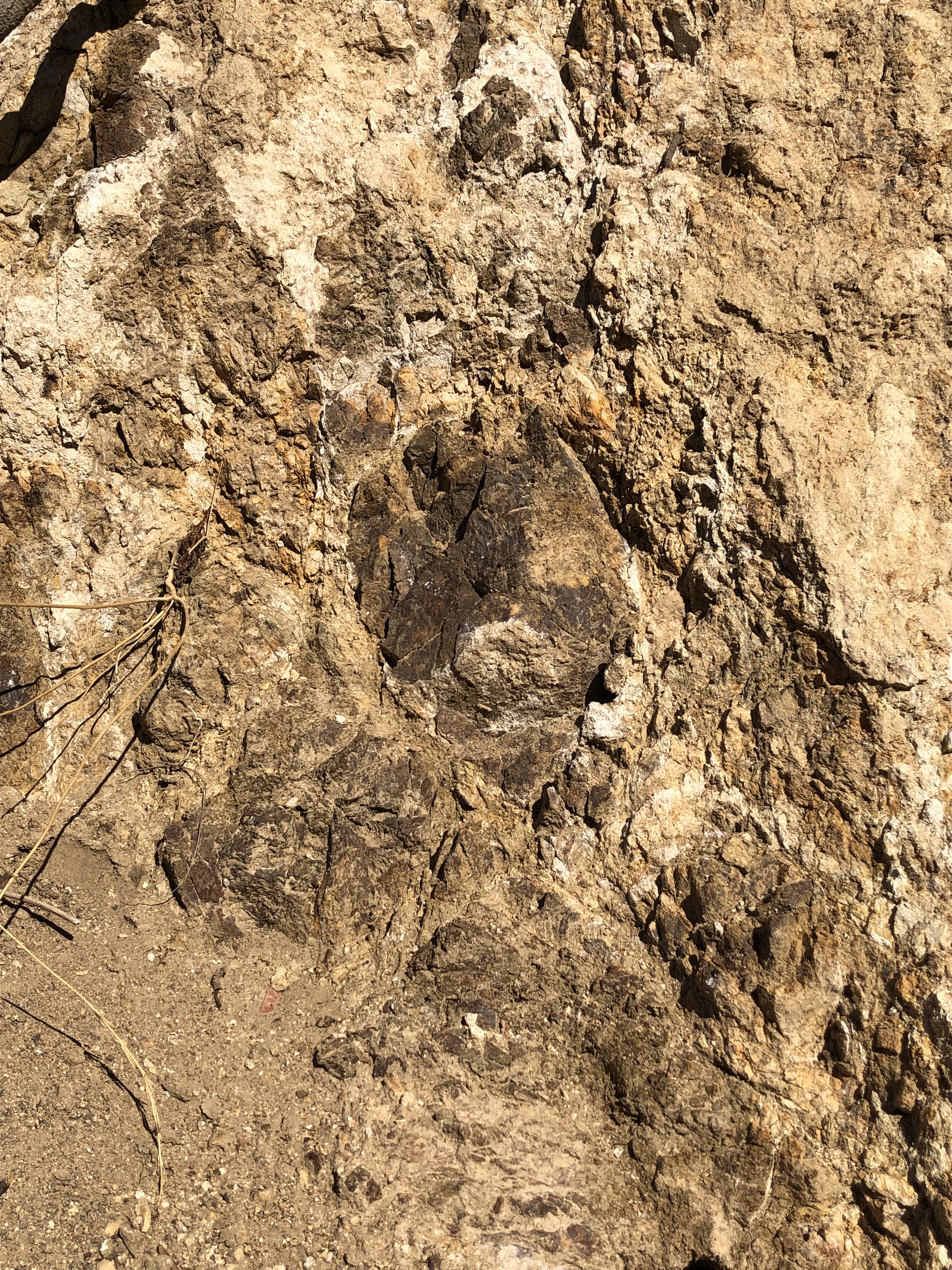

ABOVE: The slopes are undeniably mineralizing. That dark chocolate ore poking out is probably quite rich in copper. The little white extrusion is probably chemically leached — it was like pumice, light as a feather and sharp to the hand. BELOW: First, In the middle canyon, there seems to have been a pretty recent flow of whatever the white mineral fluid is, over the canyton floor. It’s similar to the white mineral fluid that has recently flowed and congealed at Nichols Canyon. Second, at the side of the entrance trail, there’s an unnverving rock risen to the surface. It’s unnerving because it has been bent back upon itself like a hairpin, forcing the white stuff to bulge at the center. It’s a memorial to the fact that this whole canyon is made of boiling rock, frozen in moments.
